Early in the morning in Tbilisi, Cédric packed our things and prepared to leave before the city traffic became too busy; we had big hopes that Sunday morning would at least be a little easier. We loaded up our bike, bid our host farewell, and set out. Central Tbilisi is set on slopes of a few large hills, so we tried to find the flattest route possible towards the Armenian border, while also avoiding cars (and especially drivers). A few options would have us cycle over 1000 m in elevation in just a 10-kilometer stretch… something Cédric and I weren’t tackling after a few days off the bike. This would also have meant about a zero percent chance to reach Armenia on that day, which we very much intended to do. Instead, we chose to cycle on the main roads and hoped most people would spend the weekend sleeping in. Just as we were cycling through the city, we found three other cycle tourists – the firsts in a very long time heading in the same direction as we did – who had the same idea as us: heading towards Armenia and trying to find the optimal road – so we decided to cycle together.
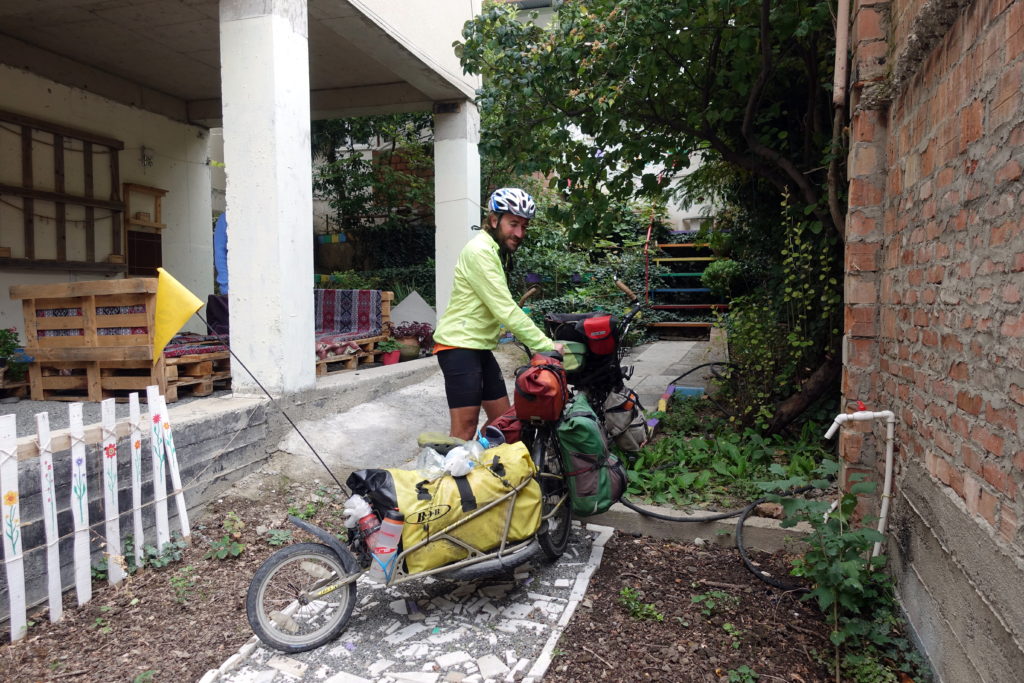
Instead of following the main highway the entire time, we decided to find a not-so-shortcut unpaved road through a few fields and villages. This had us go on a few rough tracks and through the eerie town on the shores of Lake Kumisi – we weren’t quite sure what purpose the mostly abandoned buildings served, possibly vacation homes we figured, but definitely not the greatest image of Georgia. Just as we were reaching the main road, Cédric and I had a few bike malfunctions which caused us to stop and tinker with the chain for a good half hour. In the afternoon, Cédric and I managed to catch up with the cycle tourists once again (three Russians on a two-week trip from Baku to Yerevan) and proceeded towards the Armenian border. Along the way, we found produce and laundry detergent stalls lining the road and selling their wares to travelers looking for a better deal. We were starting to wonder how Armenia was going to be, especially if they had to get to Georgia to find detergent and other basic products – yet another desperate country like in the Pamirs? The traffic was dense over the last tens of kilometers before the border, but there are not so many roads between the two countries to choose from, and taking the shortest road to the border from Tbilisi would bring us to much quieter roads on the Armenian side – either you get the traffic from Tbilisi, or the traffic to Yerevan… We crossed the border together towards late afternoon and sorted our needs for the new country (SIM card, cash, and food). First impression after a few kilometers only, Armenia felt a lot more chilled than Georgia! Towards nightfall, we found a camping spot overlooking the Debed River and the mountains on the Georgian side.
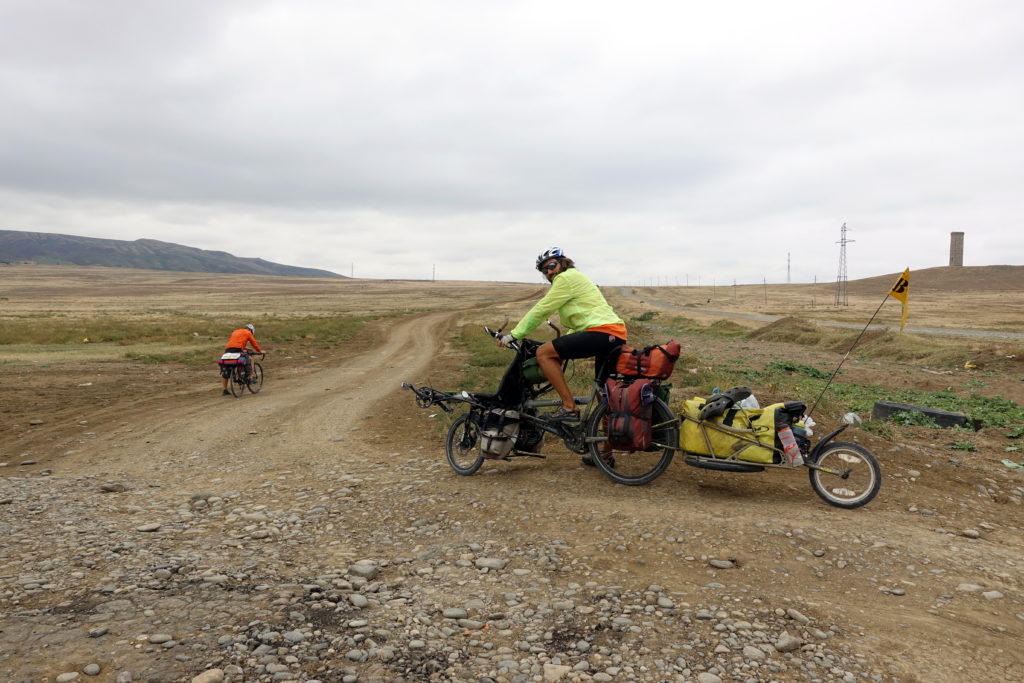
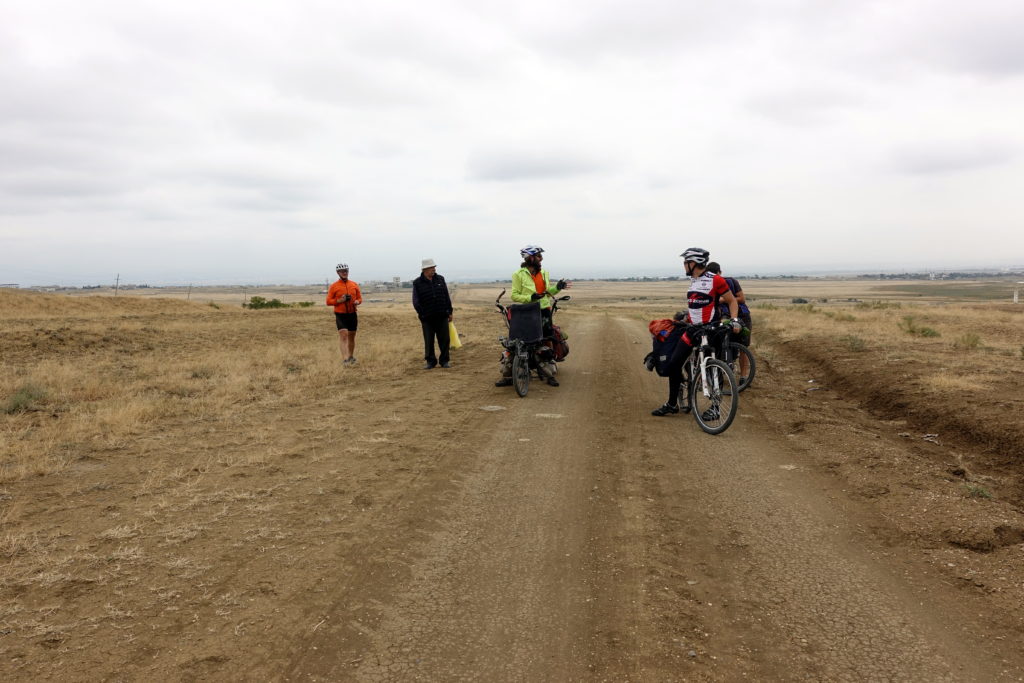
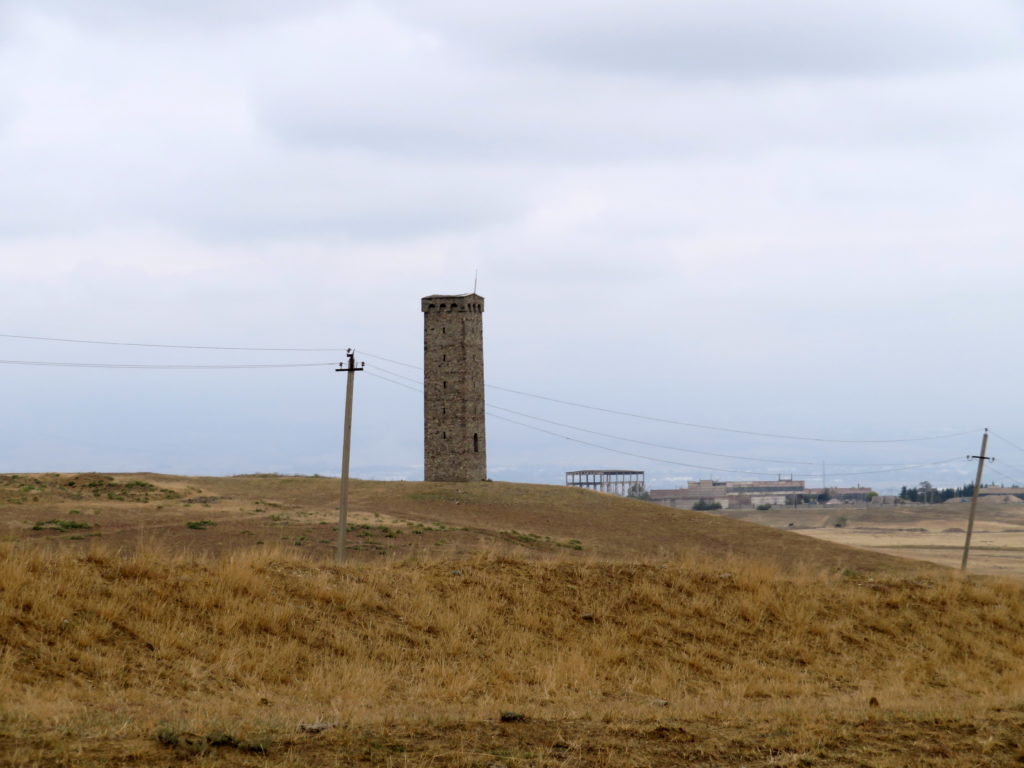
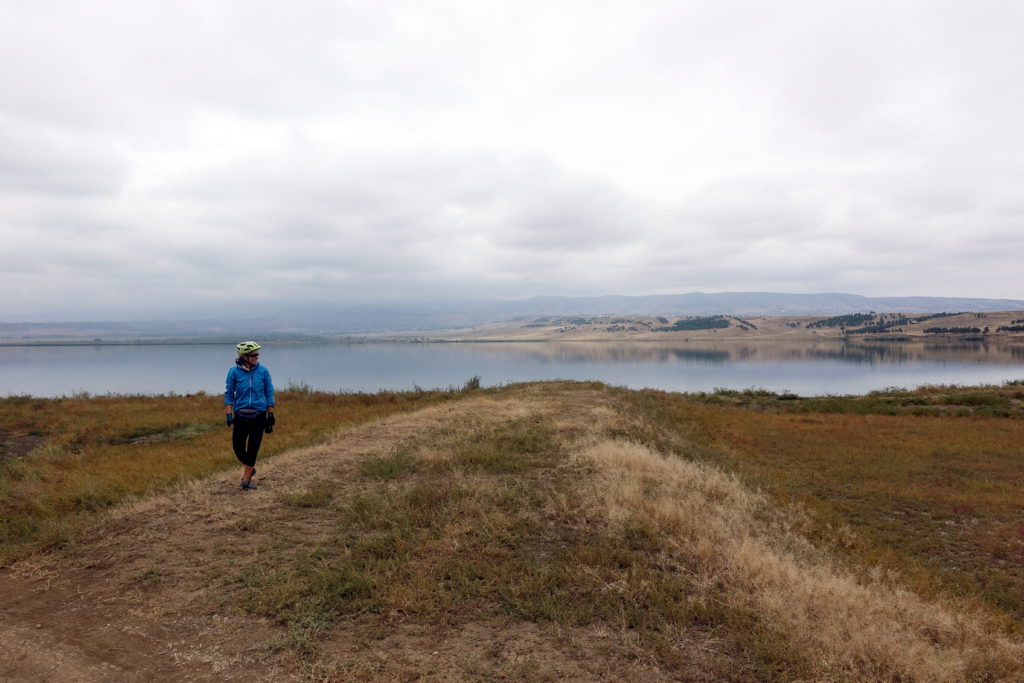
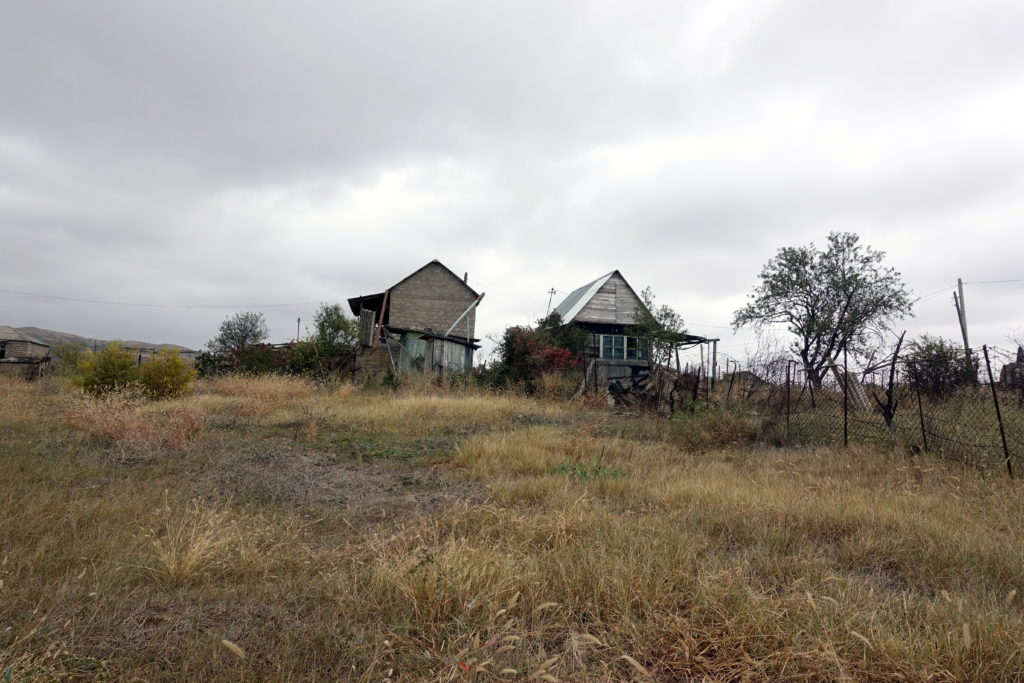
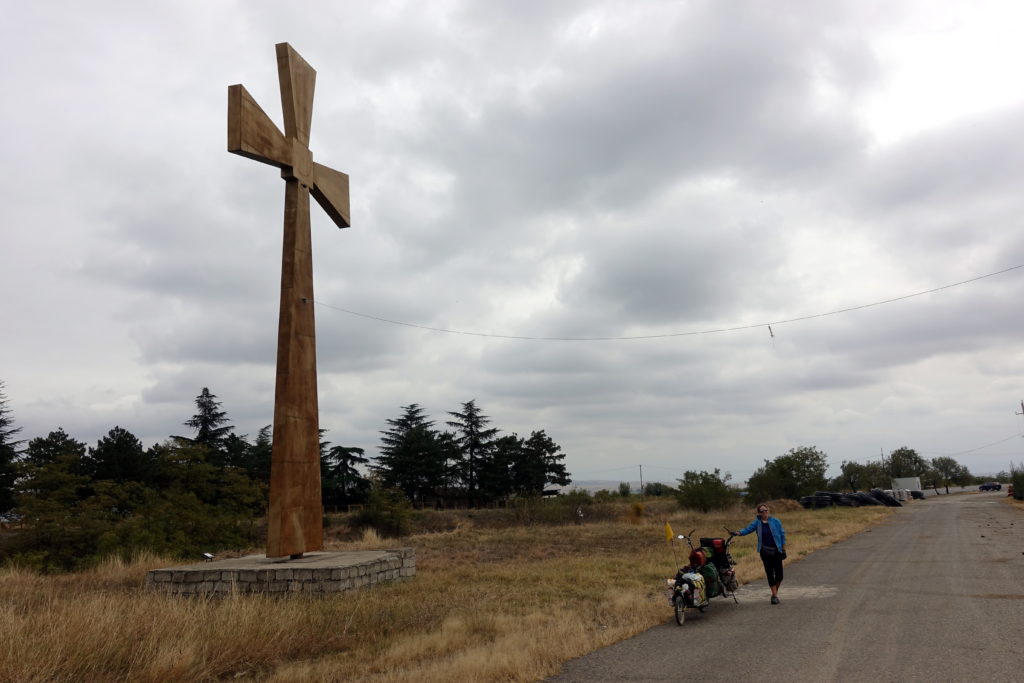
The next morning, Cédric and I set out early, positive that our lightweight companions would catch up to us at some point during the day. For the morning ride, we had nothing but a steady uphill climb to manage. We passed through villages where locals were butchering livestock and tending to their crops in the fields. What we could notice almost immediately after crossing the border is that Armenia also felt more industrial than the other post-Soviet countries we cycled through (save Kazakhstan). Some of the smaller villages had functioning factories (albeit very small in scale) in addition to the local market, car mechanic, and café. As we were continuing our ride up the mountain side, we stopped near a roadside fountain (which are plentiful in Armenia, a dream for cyclists) to enjoy our lunch in the sun.
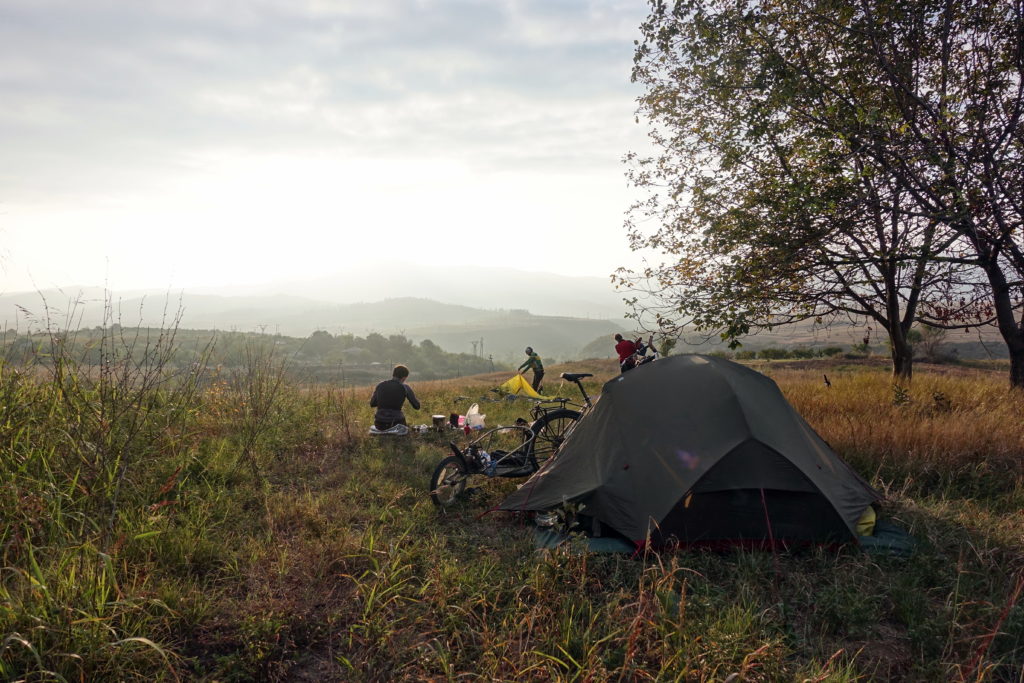
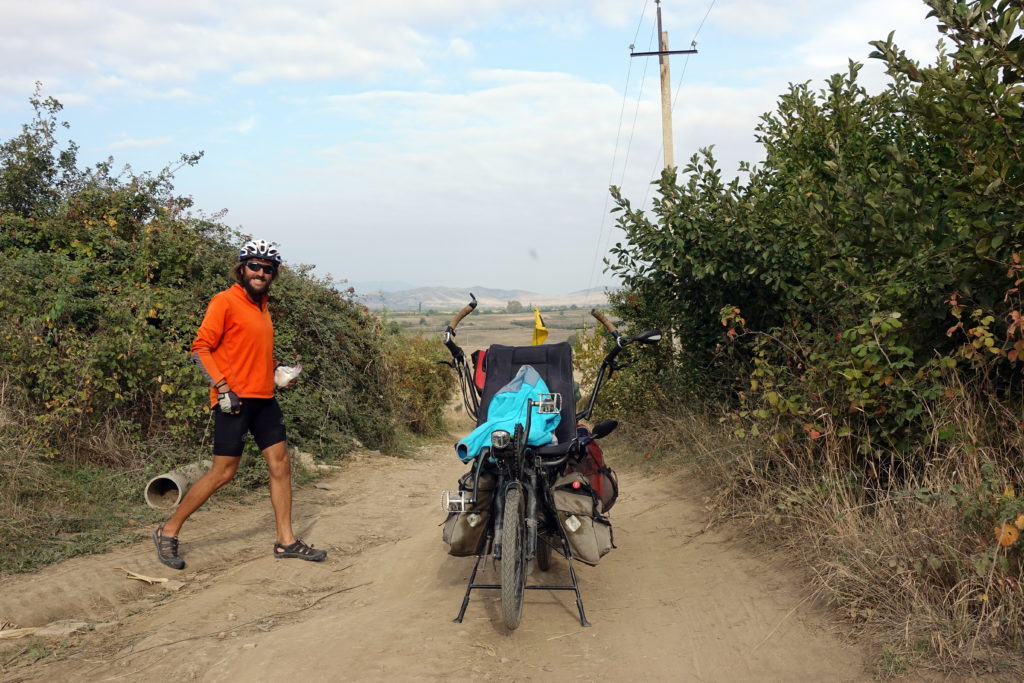
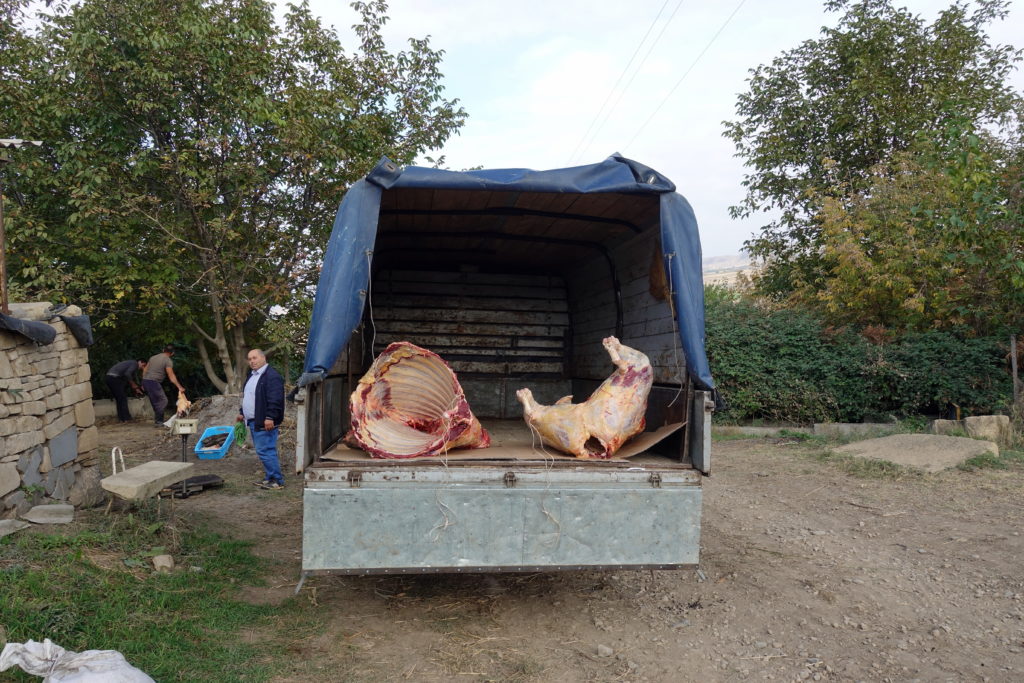
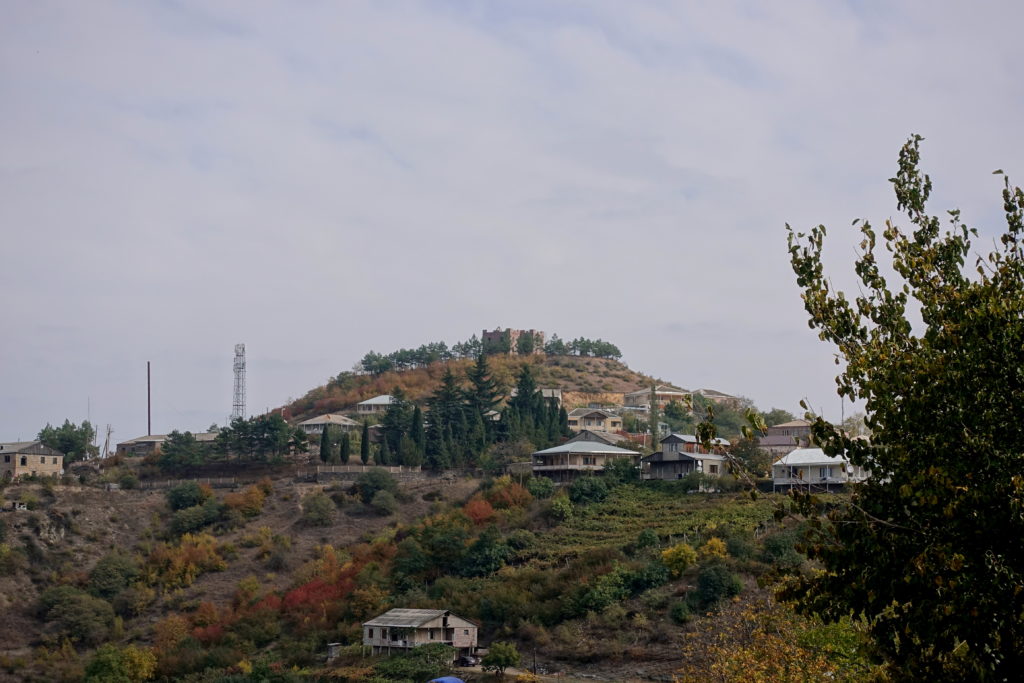
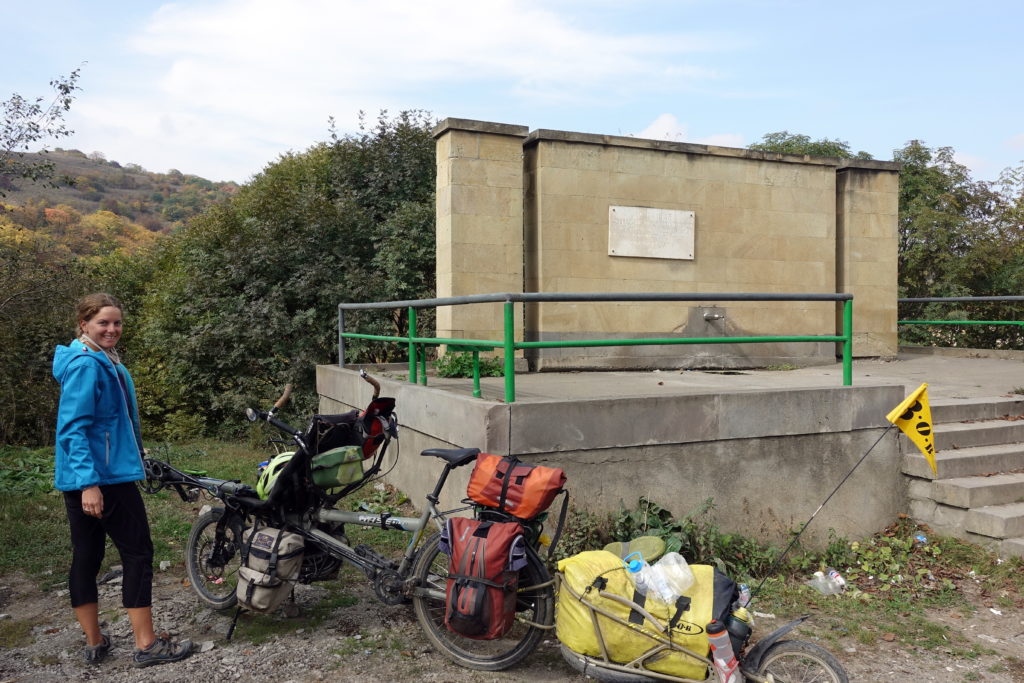
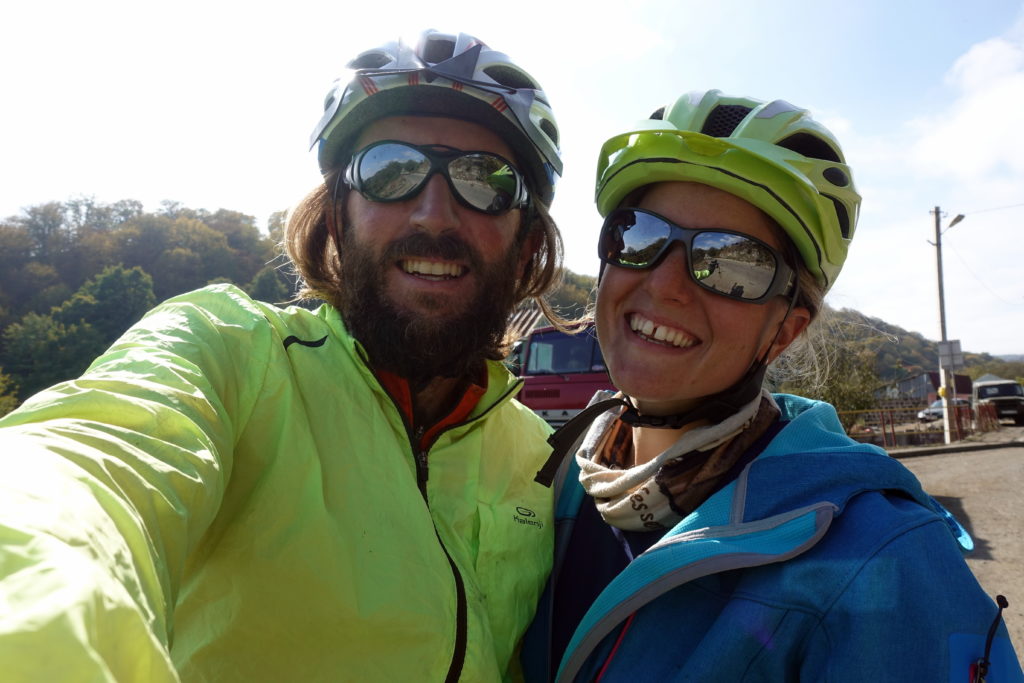
In the afternoon, we continued along the road that bordered perhaps a bit too close to Azerbaijan. The Armenians and Azeris are still in active conflict over some border territories – if anyone looks closely at a map, they’ll notice that there are still some enclaves of Azerbaijan in Armenia and visa versa. The most notable is the Nagorno-Karabakh region, which technically belongs to Azeri territory, but is controlled by the Republic of Artsakh (an unrecognized state, the Caucasus has a few of these…) and the Armenian military. In short, the borders are not super clear, and basically depending on who and when you ask. Needless to say, tensions are high along some borders and the Armenian and Azeri forces are very present, facing each other at bullet-distance (+1 meter). Some villages found themselves in the crosshairs after the dissolution of the Soviet Union, when borders were being defined, and are now decaying shells of buildings. Despite the fighting, one remarkable structure that’s still standing is the 7th century Holy Mother of God Church just inches away from the border. As we approached, two Armenian military guys came down from their lookout to show us the inside of the church – things appeared to be relaxed that day because they were both wearing flip-flops instead of combat boots. (Also, for anyone reading this and worried about our safety – the current contested territories are far away from this area, but it is still better to remain on the asphalt in this area – both countries have had the genius idea to plant landmines instead of potatoes there). The conflict between the two countries is pretty much unheard and unknown outside of the region, and we have to admit that we got surprised on site by the current situation – the good news is that this road is very pleasant and quiet (probably because apparently recommended to avoid, but given its length it would be easy to quickly get away from the area!).
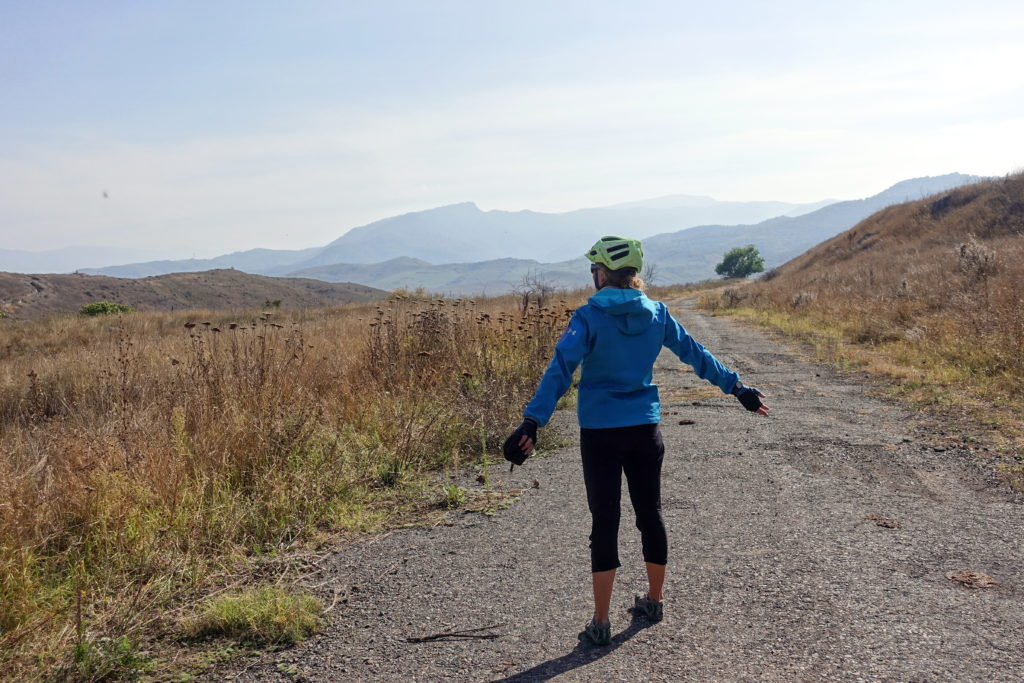
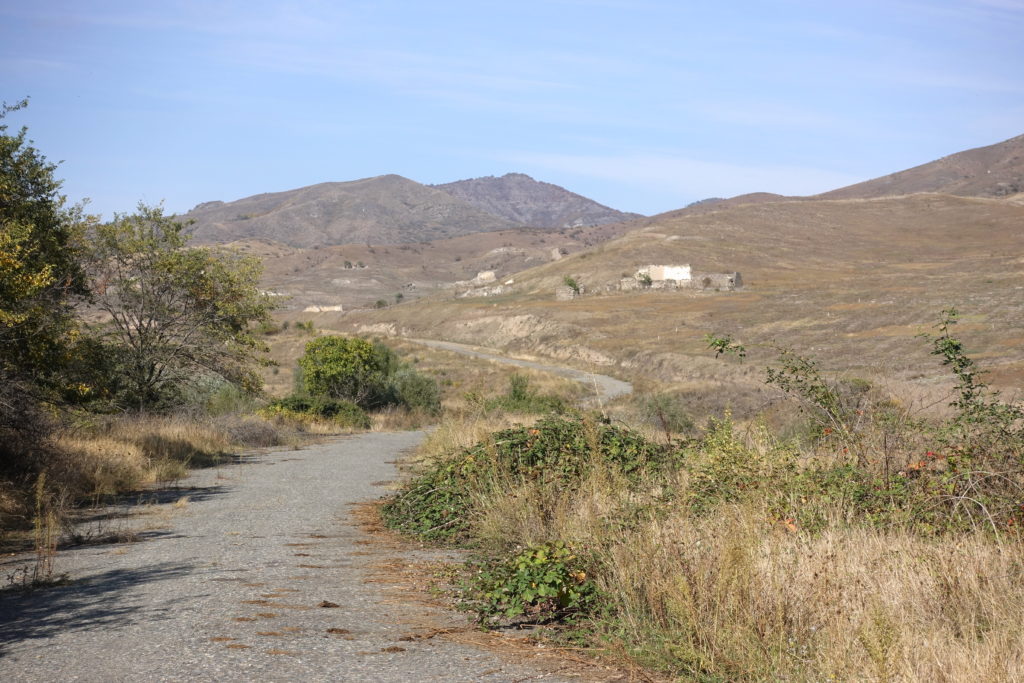
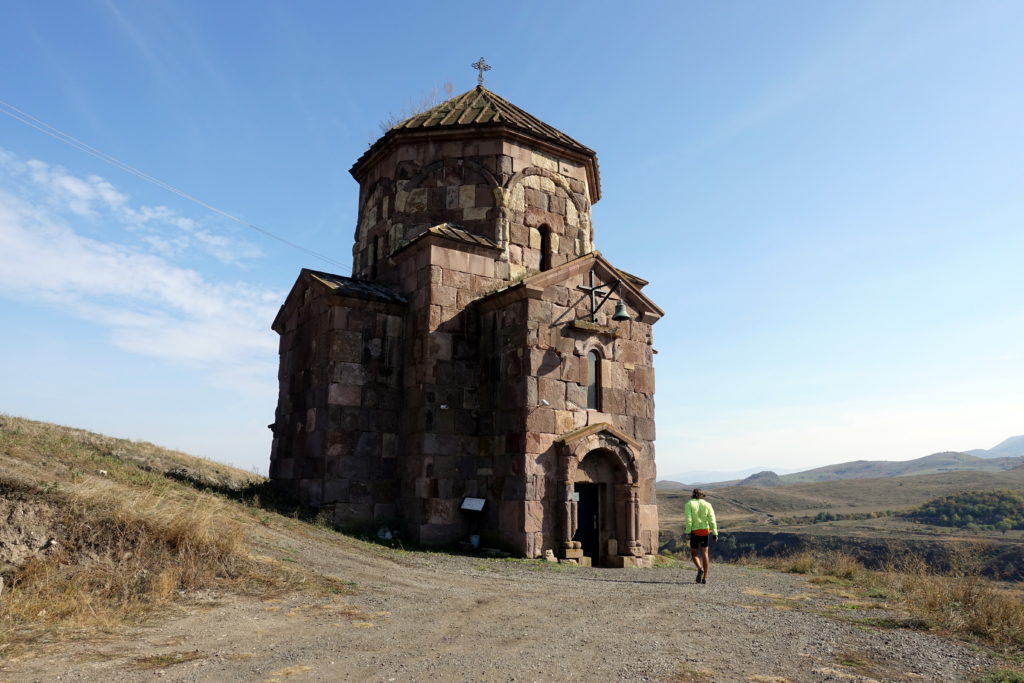
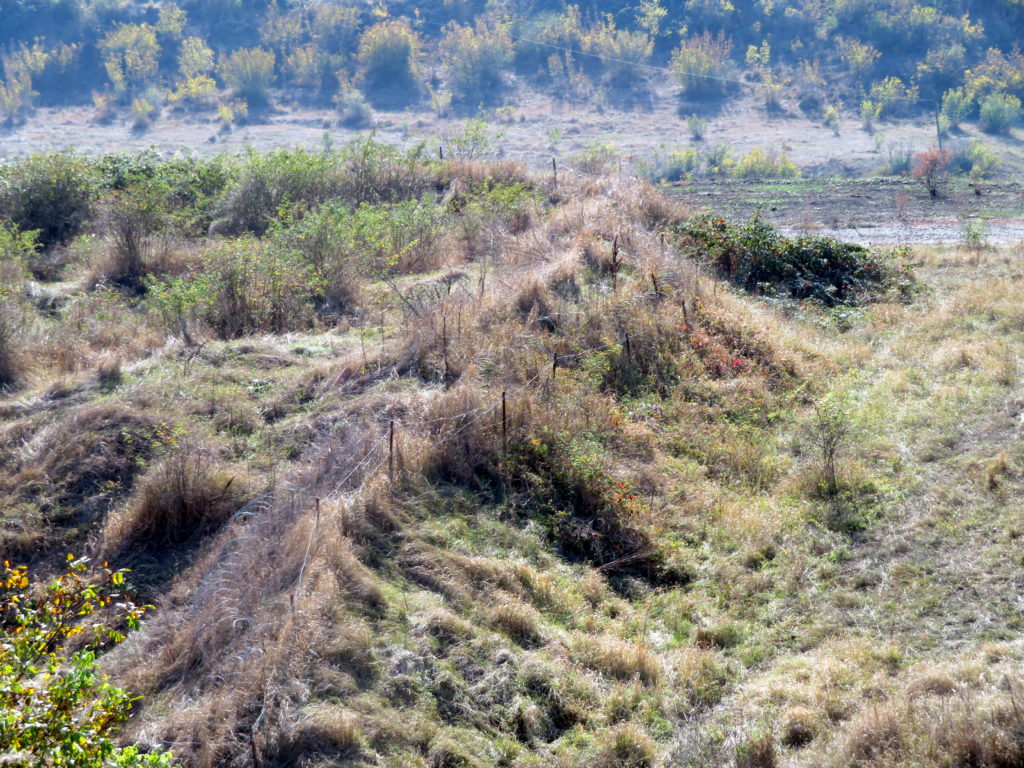
After we visited the church, we wanted to make sure we camped a good distance away from the border (again, some unverified rumors of snipers), so we had to cycle up over a large hill that sat squarely between the two countries. We found a good camping spot in a field in the evening and were joined by our Russian friends around sunset.
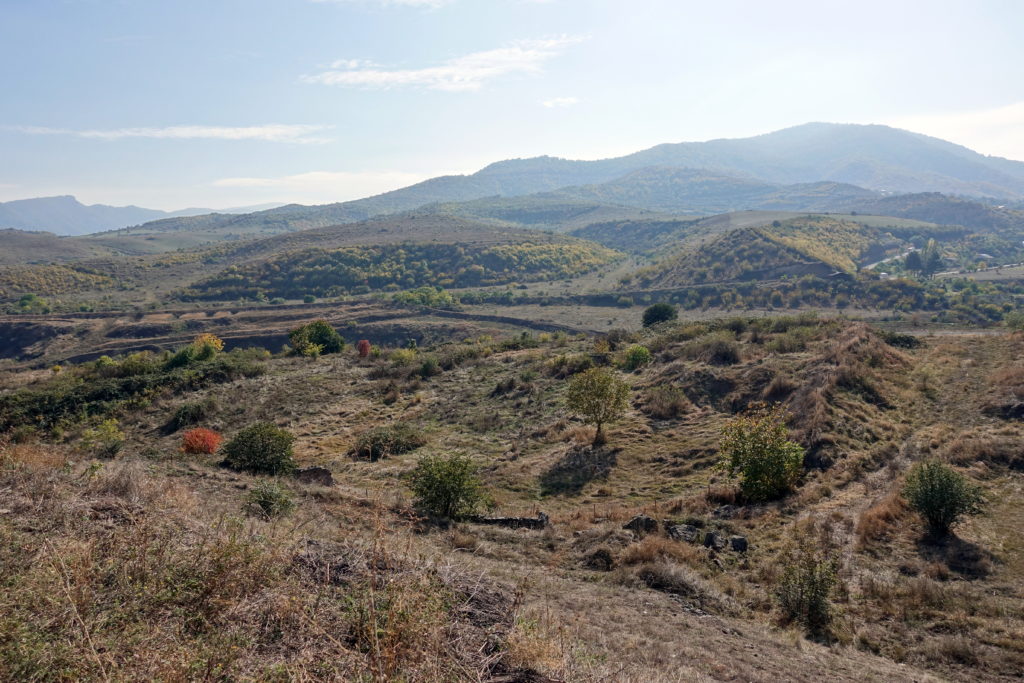
The next day, we continued our journey south and down the valley towards Ijevan. The trees in the mountains were an explosion of autumnal colors and paired beautifully with the brisk October day. In Ijevan, Cédric and I stopped for mid-morning pastries (we mistakenly went to the factory instead of the shop, so got a much larger bag of pastries for a much better deal!) and slowly cycled through the city, looking at some abandoned buildings in contrast to newer ones. We continued following the road towards Dilijan, where we ended our day with a nice Armenian dinner at our guesthouse (we also tried some homemade wine, as requested, but it tasted more like vodka-infused grape juice).
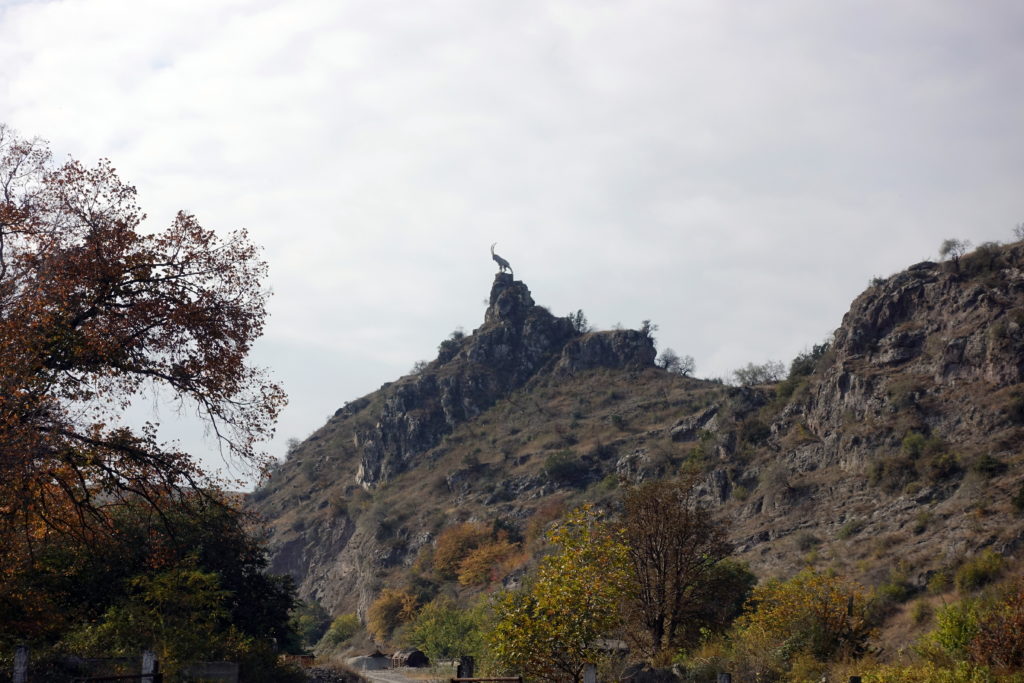
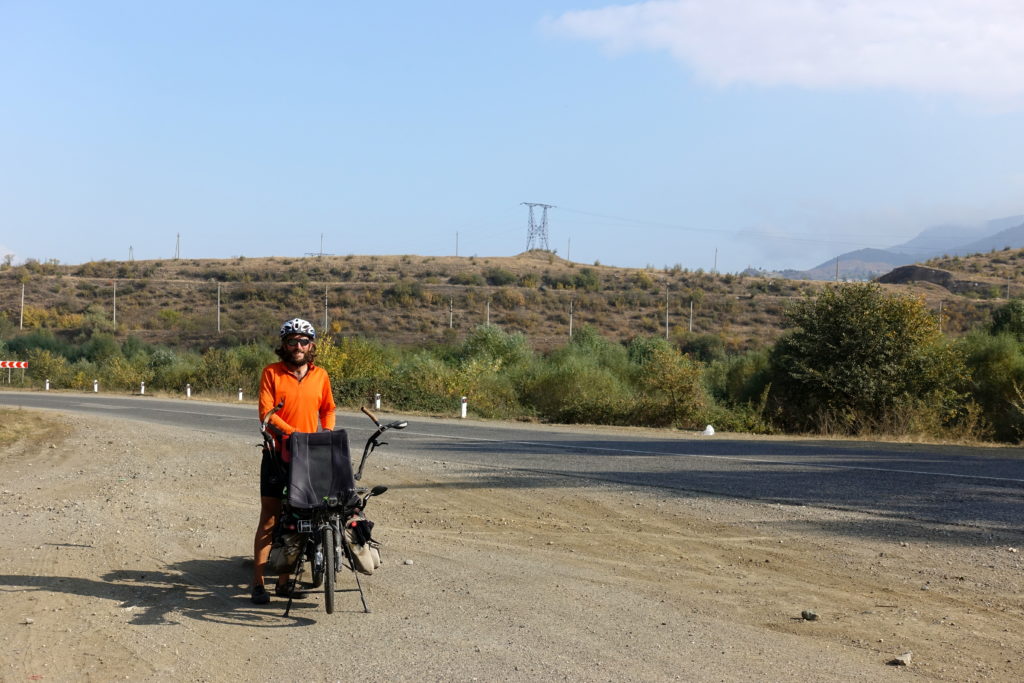
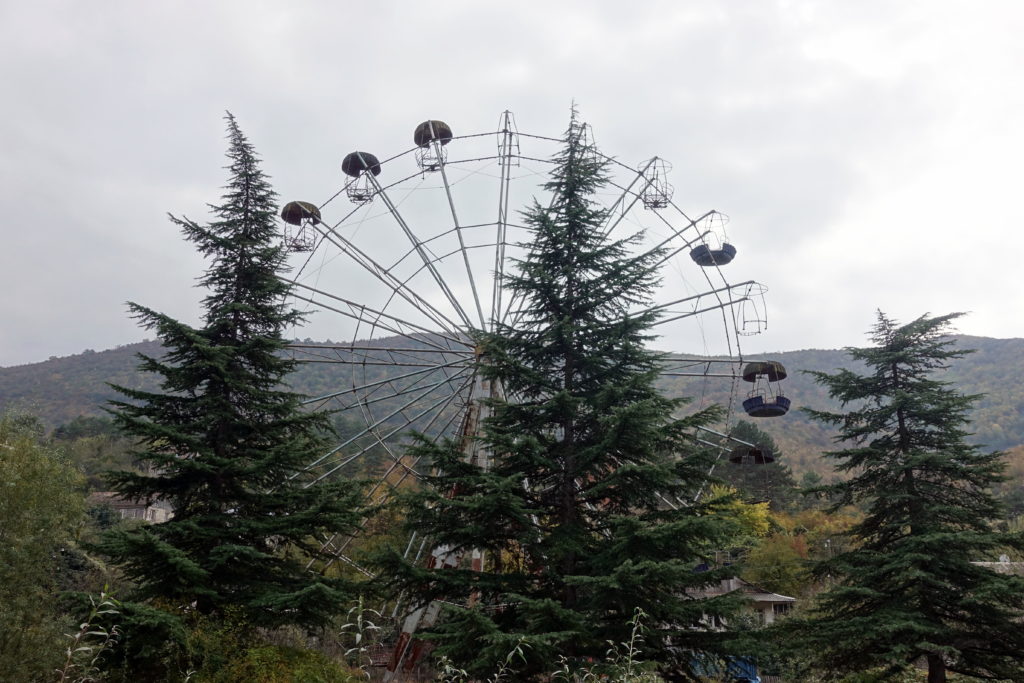
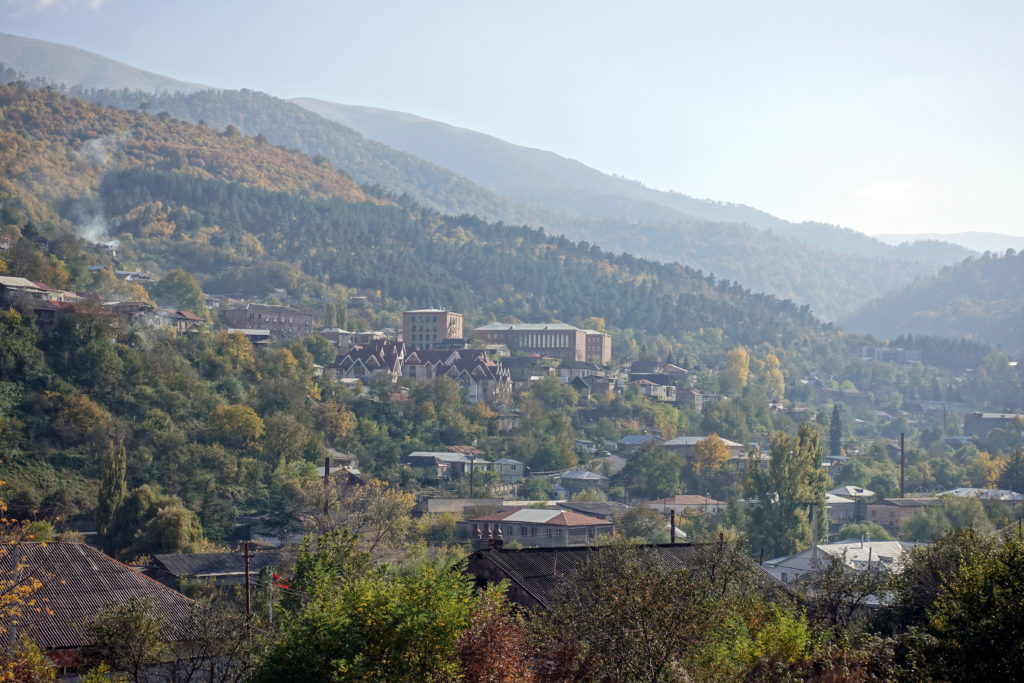
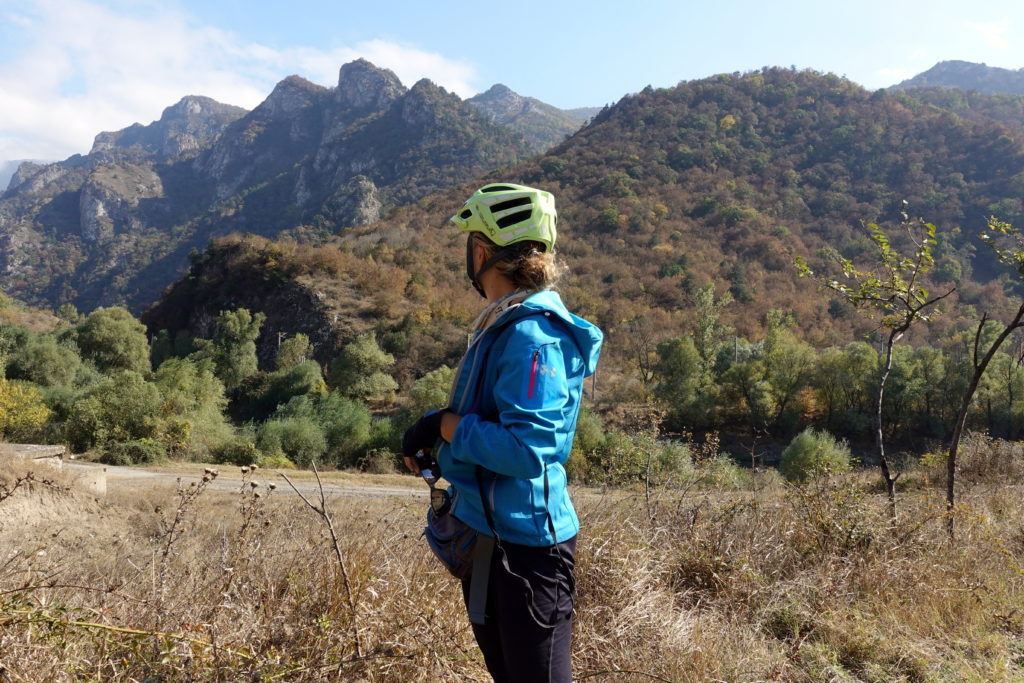
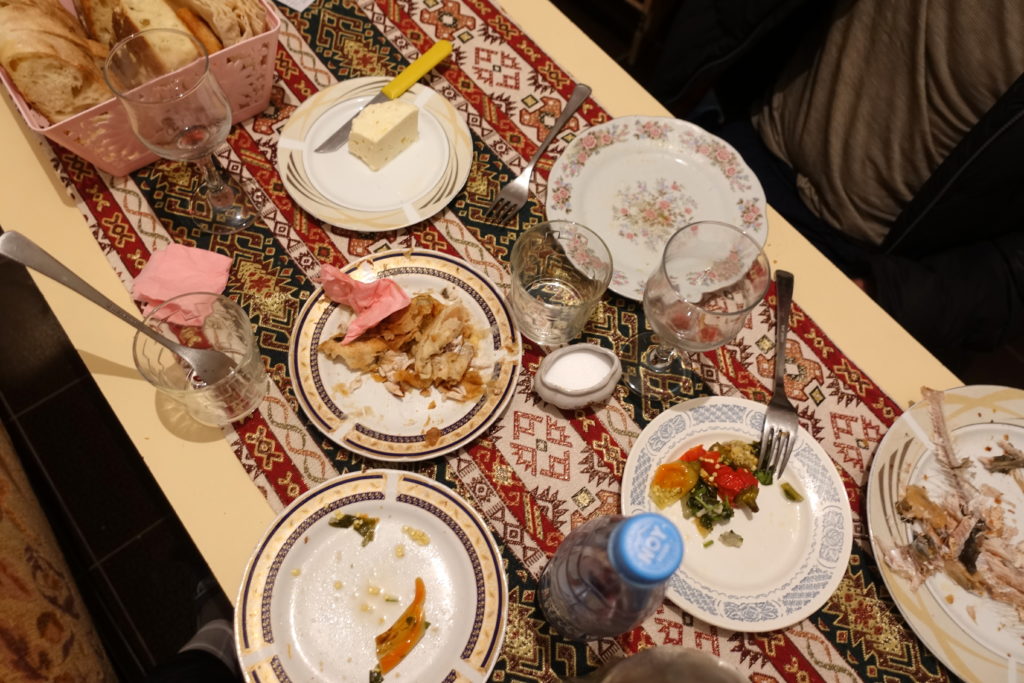
We woke up the next day to cold, cloudy skies and were preparing for a chance of showers as we left. With the temperatures and weather changing so rapidly in the mountains, we didn’t know what to expect in the upcoming hours. When we left Dilijan, we needed to cycle up one more long pass before our descent into Yerevan. About an hour into the climb, the clouds broke, and the sun started to shine and warm us up. As we were taking a picture-and-snack break, the Russian cyclists caught up to us and we continued cycling up over the hill together. At the top, we all stopped to take in the now clear, warm day overlooking Lake Sevan. Cédric and I then cycled down to the lake and had lunch at a restaurant overlooking the water. For the rest of the afternoon, Cédric and I slowly made our way down the road and through a few villages, stopping constantly for either pictures or snacks. We found an excellent place to camp on the hillside across the road from a chapel that also served as a place to knock back a few drinks with your friends. As we were cooking dinner, some guys who spotted our tent (and possibly more friendly due to some clear liquids) came over to see what we were doing. One guy told Cédric watch out for the wolves and that we could sleep at his place instead, although we weren’t interested in the prospect of packing up our things in the dark of the night and probably drinking a dozen shots at his house. The chance of getting eaten by a wolf in your tent are about as likely as getting a space-shuttle landing next to you, but here also the darkness of the night, being outside of your comfort-zone and some myths of larger animals are worrying people.
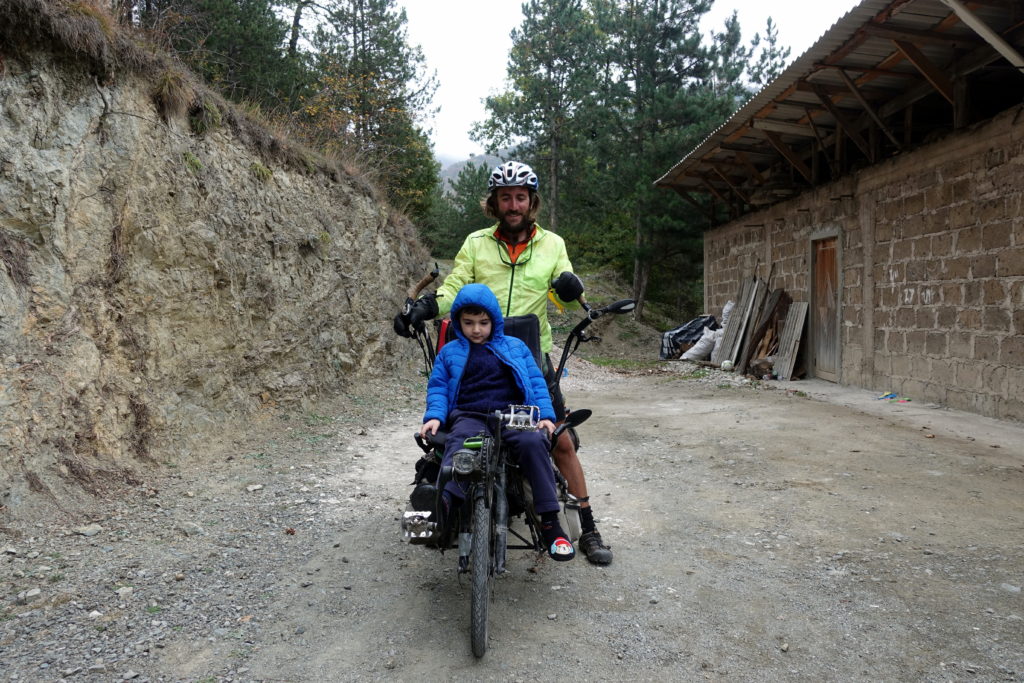
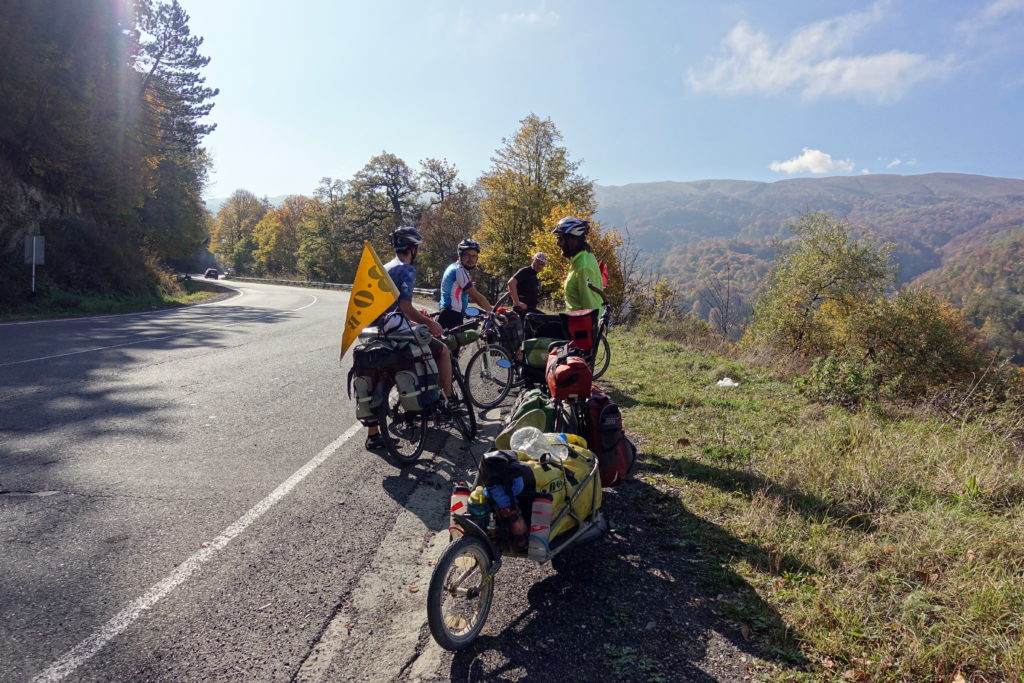
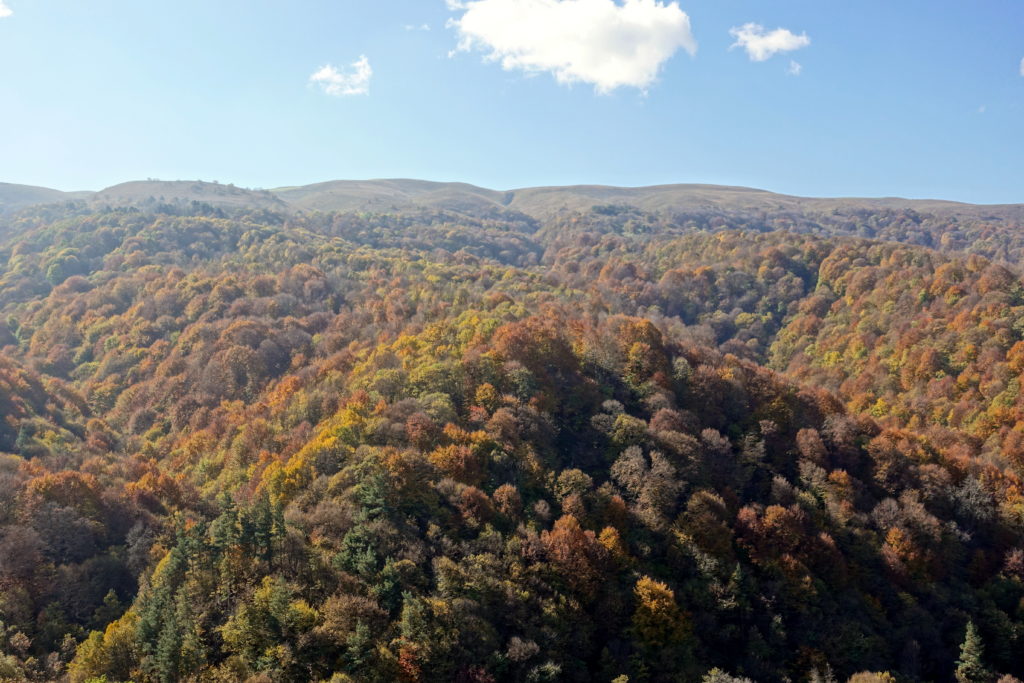
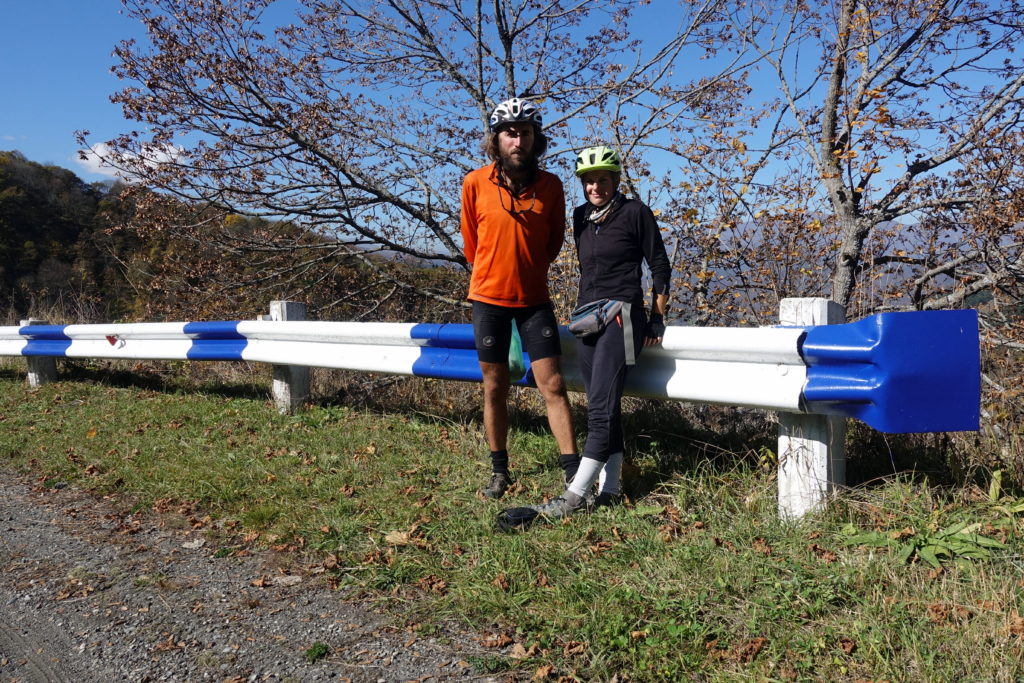
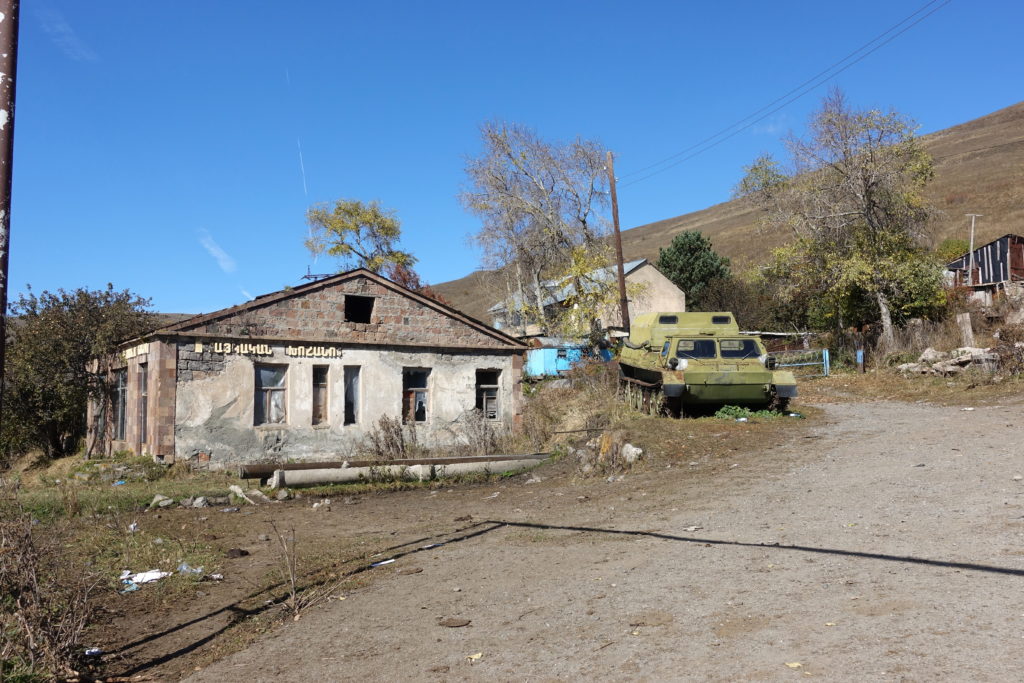
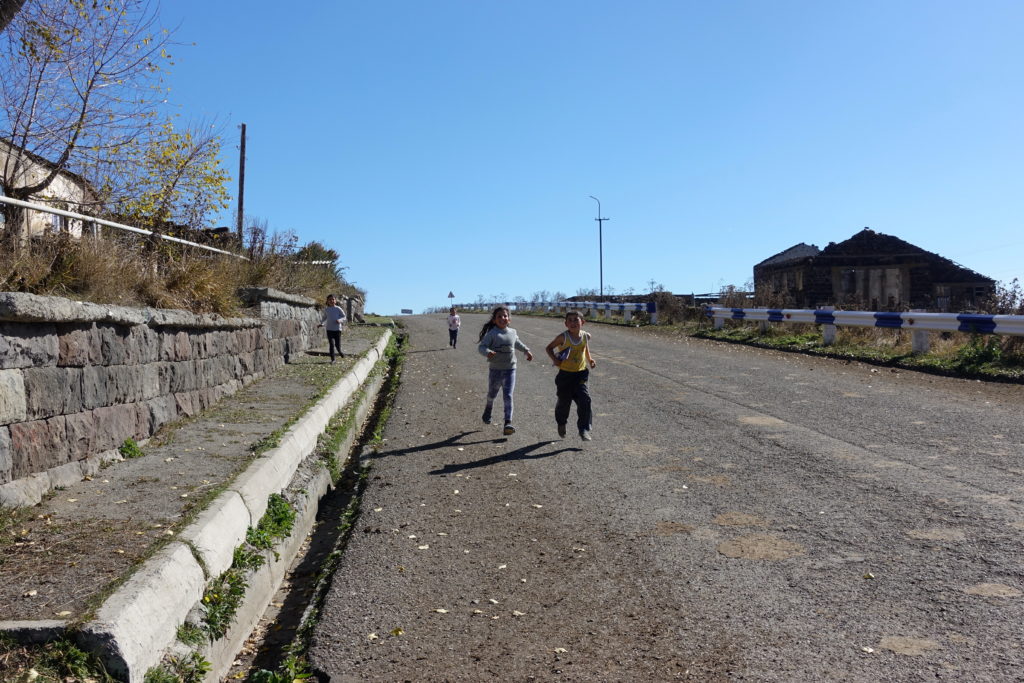
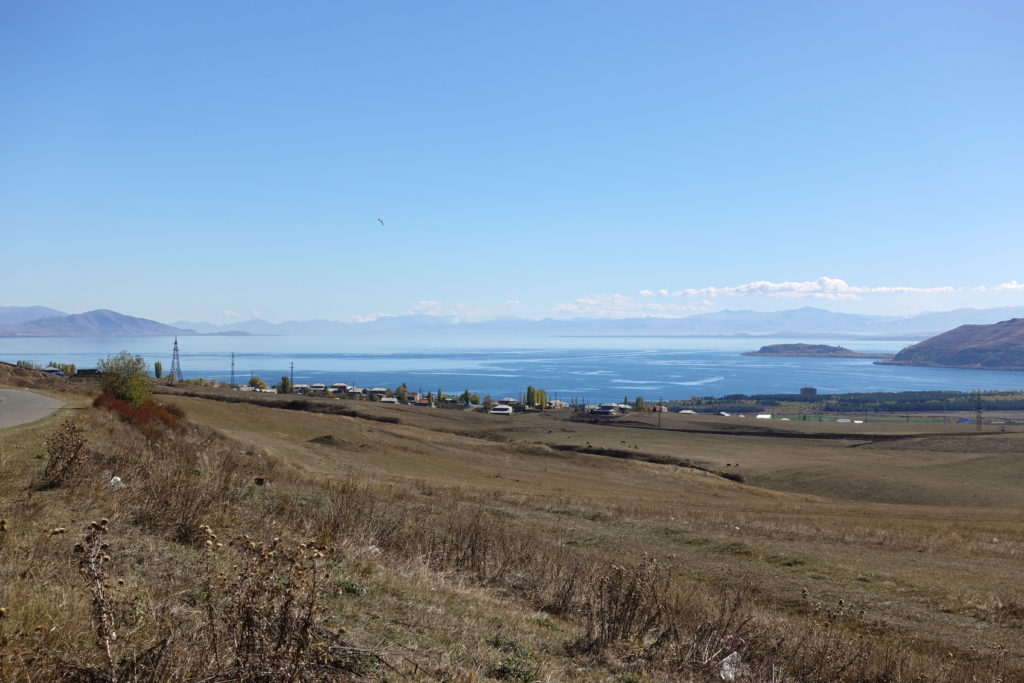

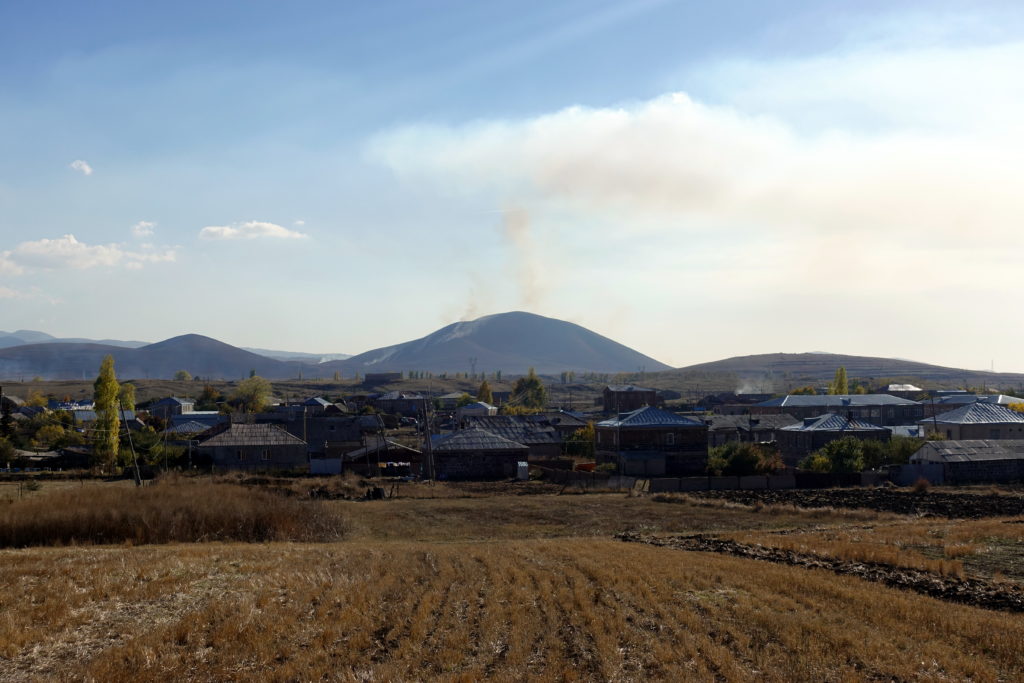
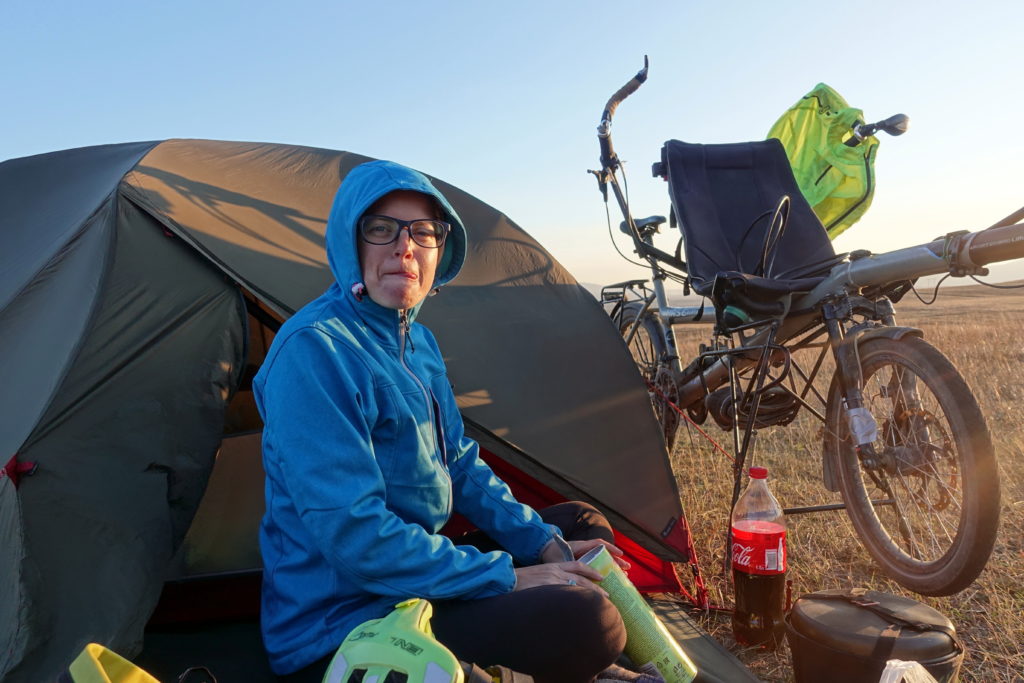
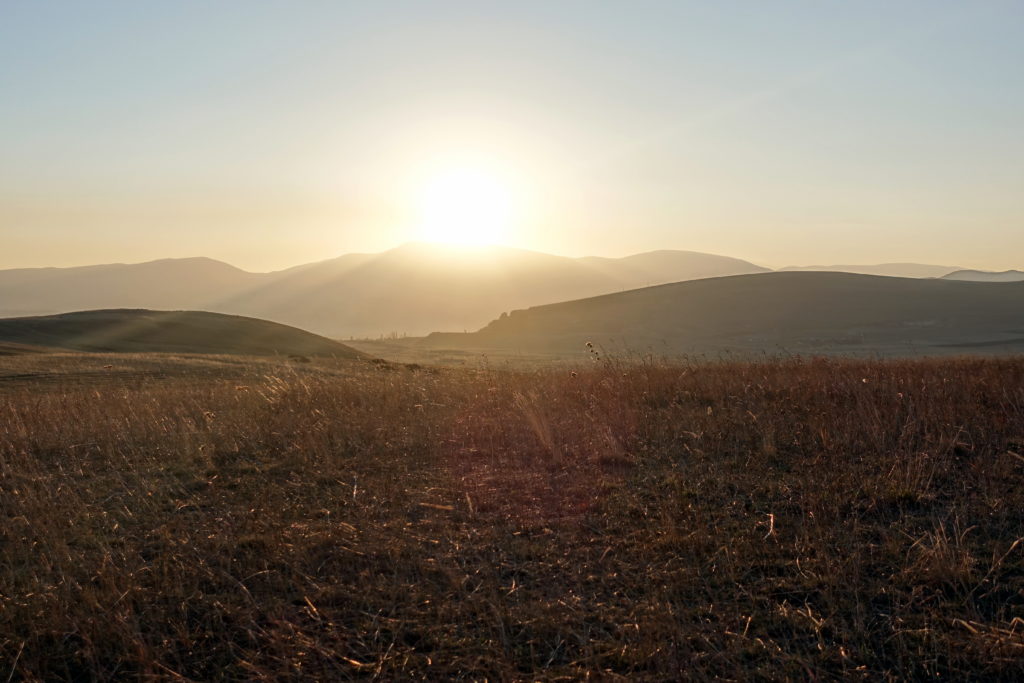
We thought that being invisible from the road, in a field next to a chapel would make that camping spot perfect, but we got to discover on that night that Armenian have a special religious tradition: whenever they pass a religious building, they honk at it twice! We have no idea what the reason can possibly be (God might be fed-up with all those churches), but for us that was slightly annoying for a deep sleep… Luckily there was almost no traffic at all for a good part of the night.
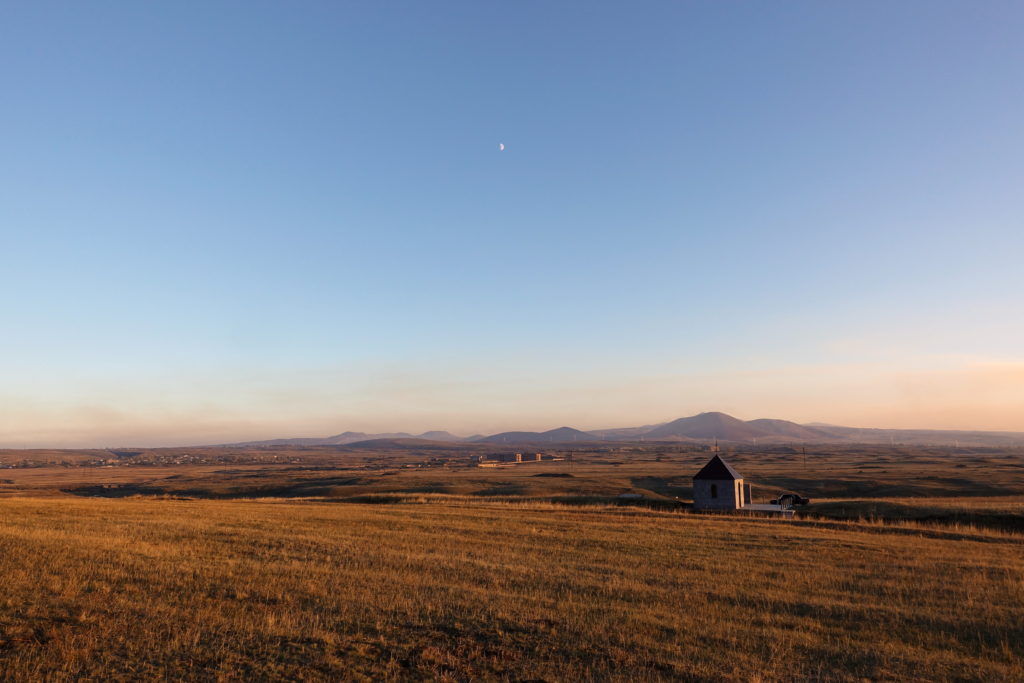
The next morning, we woke up to a frosty tent and ground. For the first time on our trip, the nighttime temperatures fell well below zero, which made it more difficult to get out of our warm sleeping bags. However, by the time we left, the sun was shining and warming up the area – and even giving us a great view of Mount Ararat in the distance. Our original plan was to follow a small river road down to Yerevan, but we took a wrong turn and ended up heading towards the highway. Since the highway shoulder was large and the traffic wasn’t too dense, we decided to take the faster route instead of backtracking. This didn’t come without its drawbacks – shortly before Yerevan, we managed to get a puncture in not one, but two tires in the same kilometer (if anyone’s wondering, our tires can withstand almost everything, even the smashed glass on the side of the road, but small wire remnants from blown-out truck tires are our nemesis – and have been the cause of all our 5 flats this year). We quickly patched the tubes and continued the ride towards our hostel in Yerevan. The rest of the day, Cédric and I did what we do in every large city: feast and look for replacement bike parts.
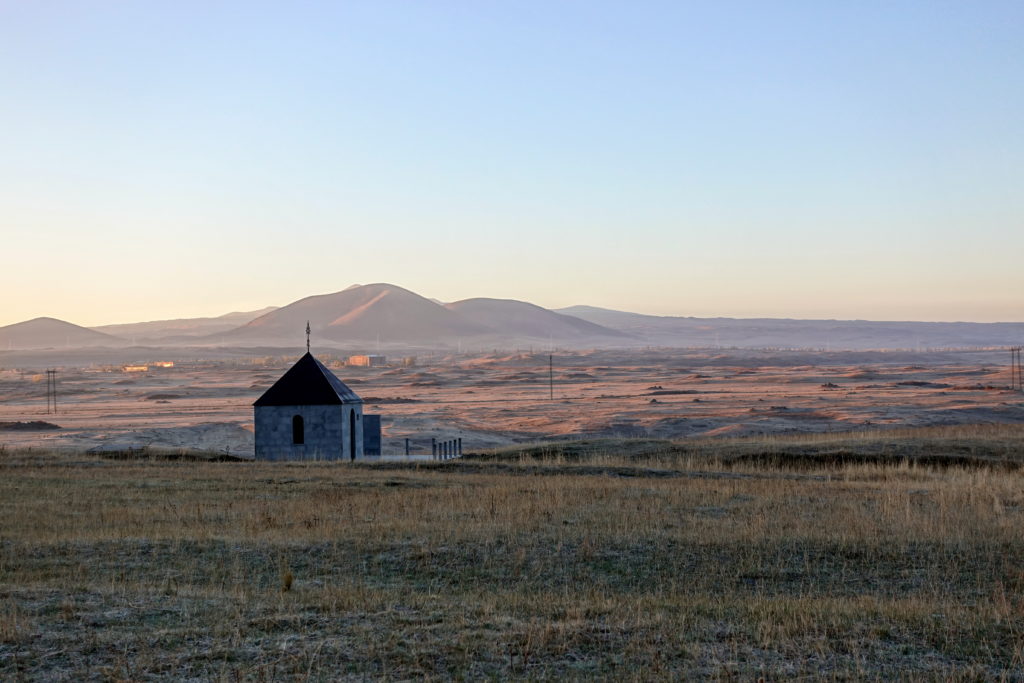
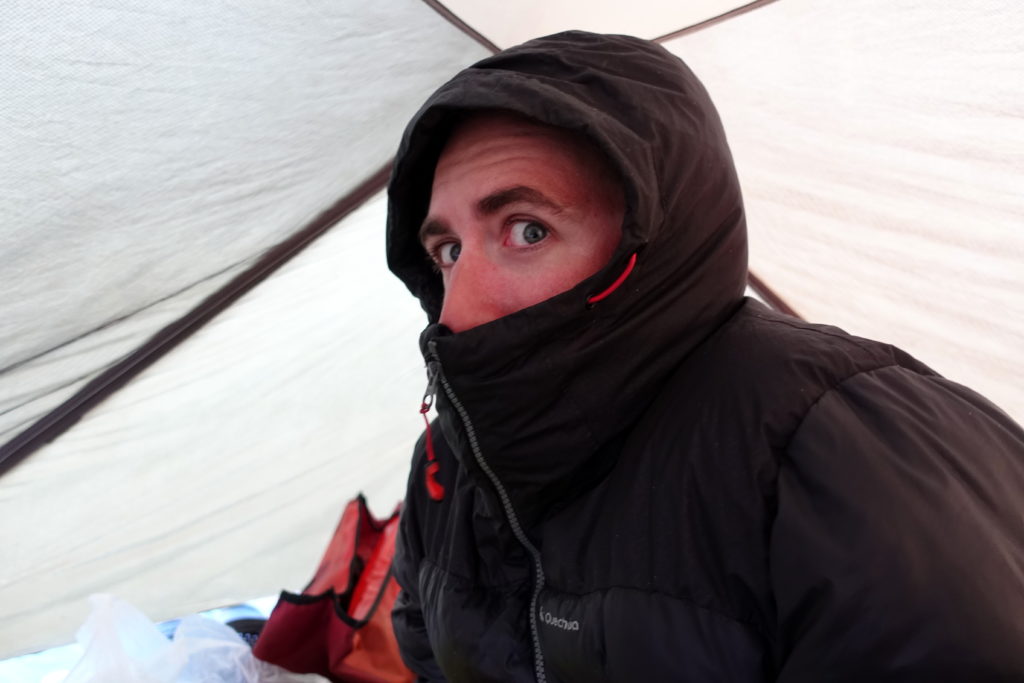
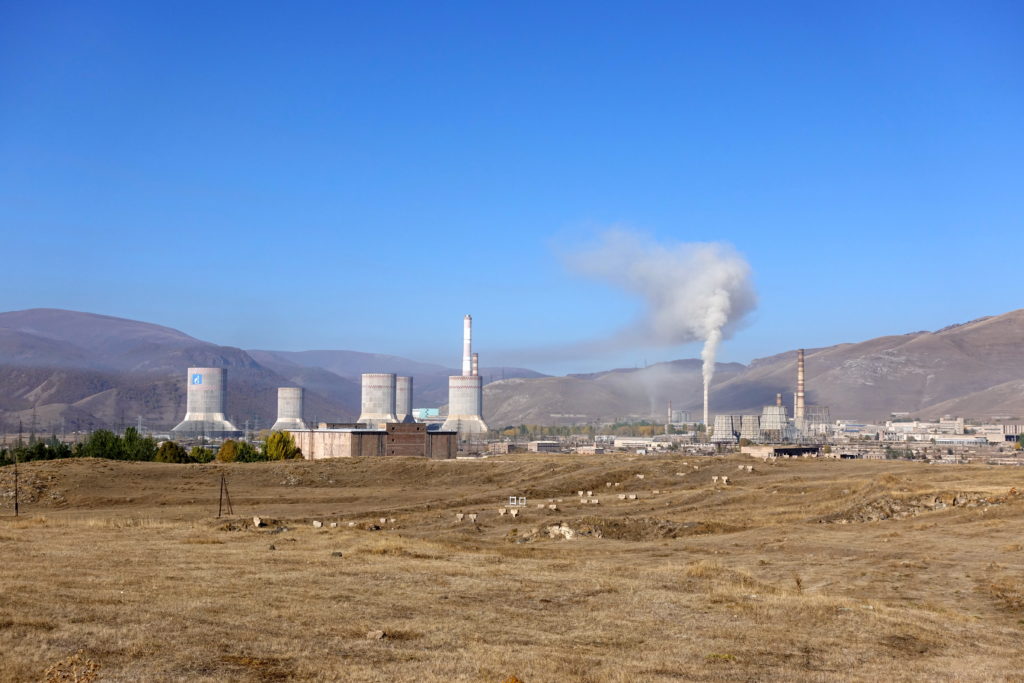
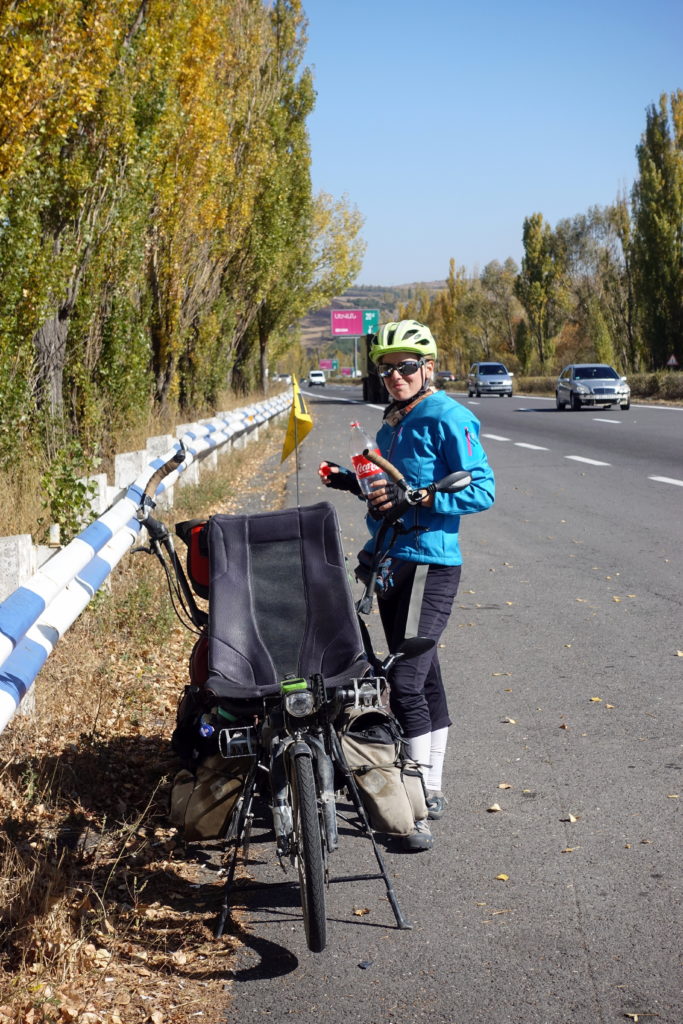
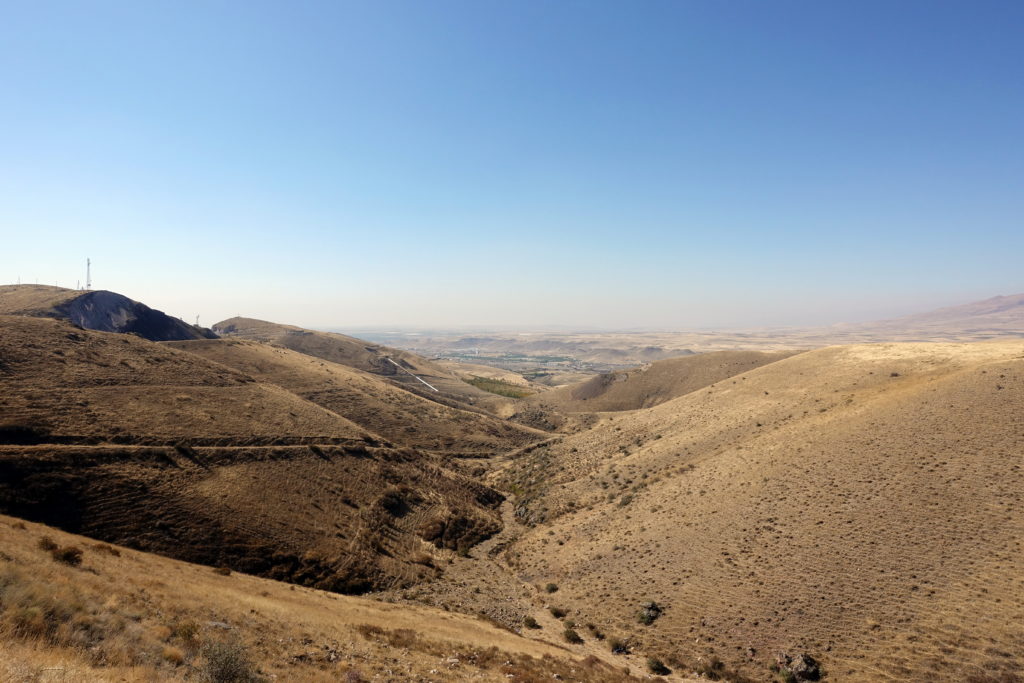
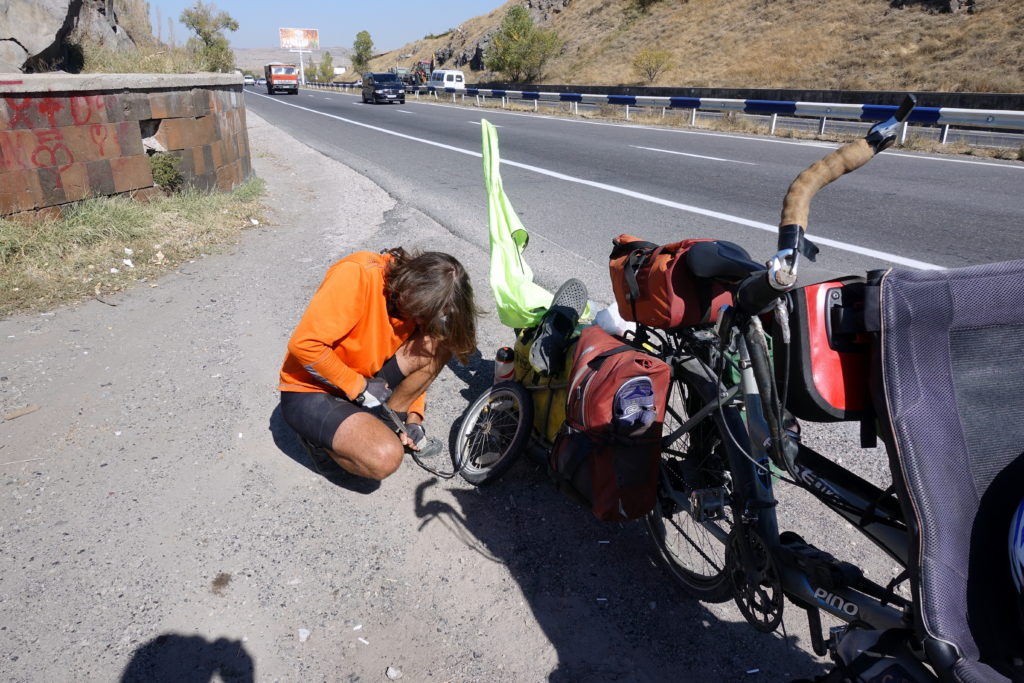
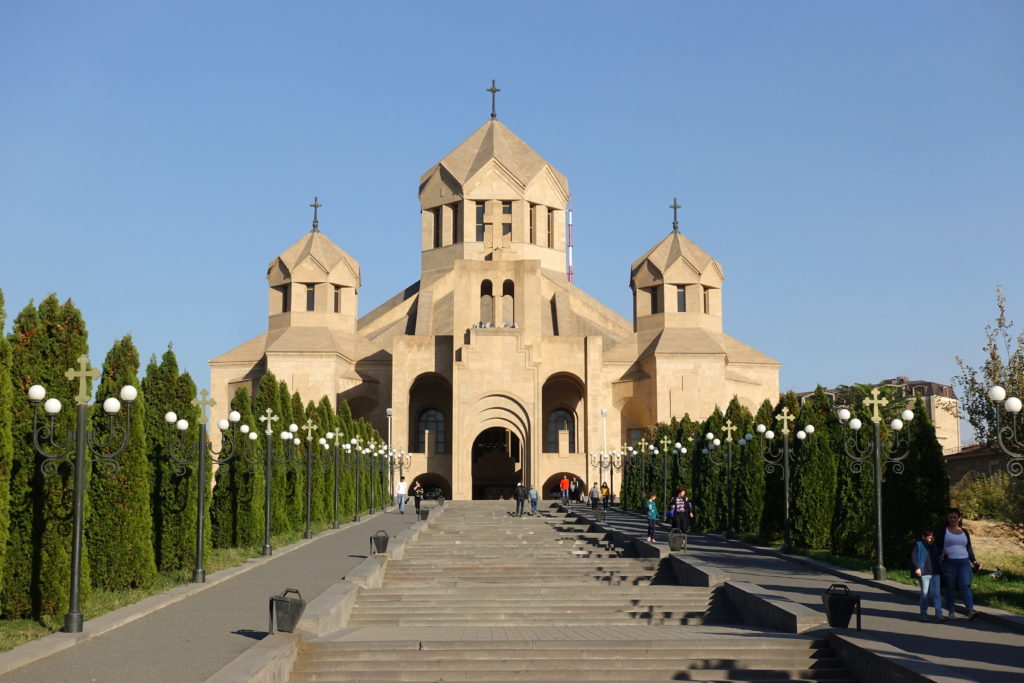
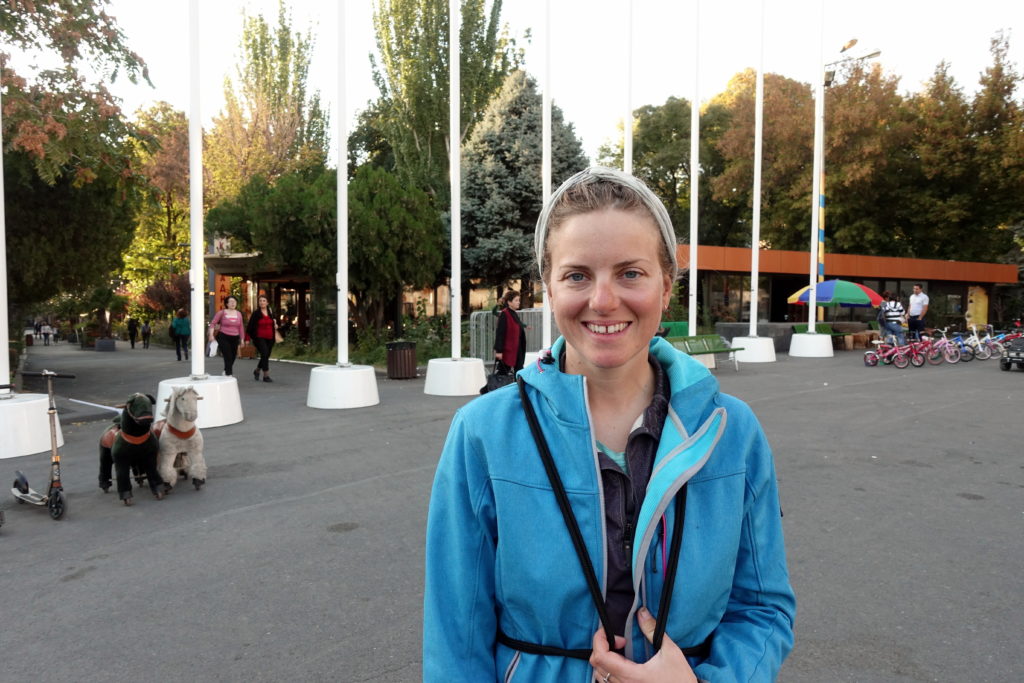
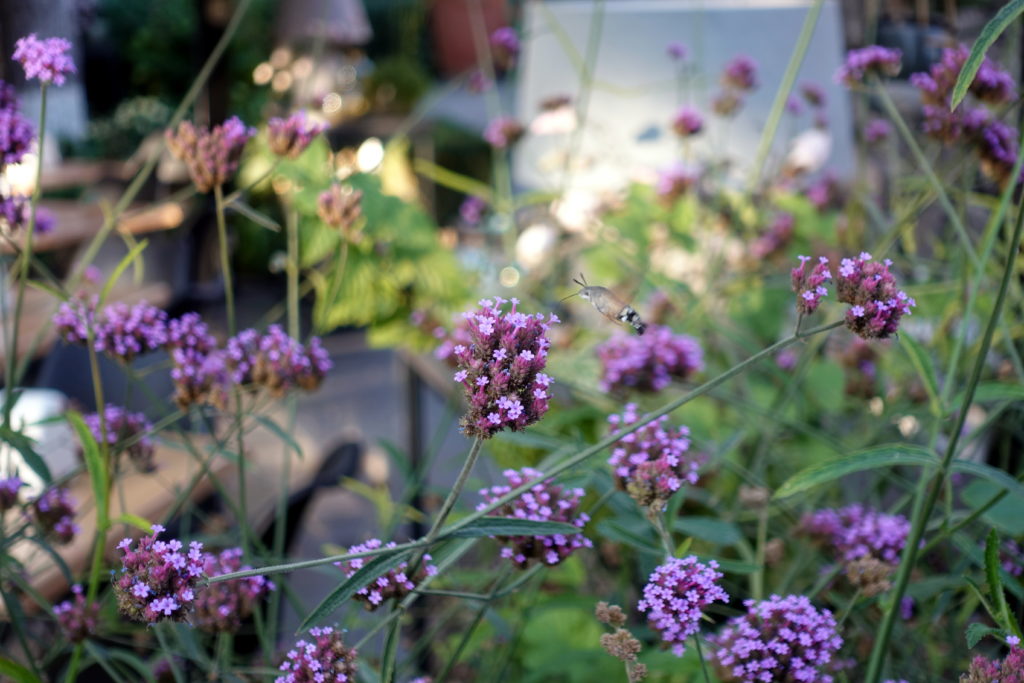
The next day, Cédric and I walked throughout much of central Yerevan. We visited the large cascade staircase, the National History Museum (very interesting for an area near the cradle of civilization), and countless churches. Cédric was also excited to go grocery shopping at Carrefour, a French supermarket chain, and was overjoyed by finding all the French delicacies that he’s been missing.
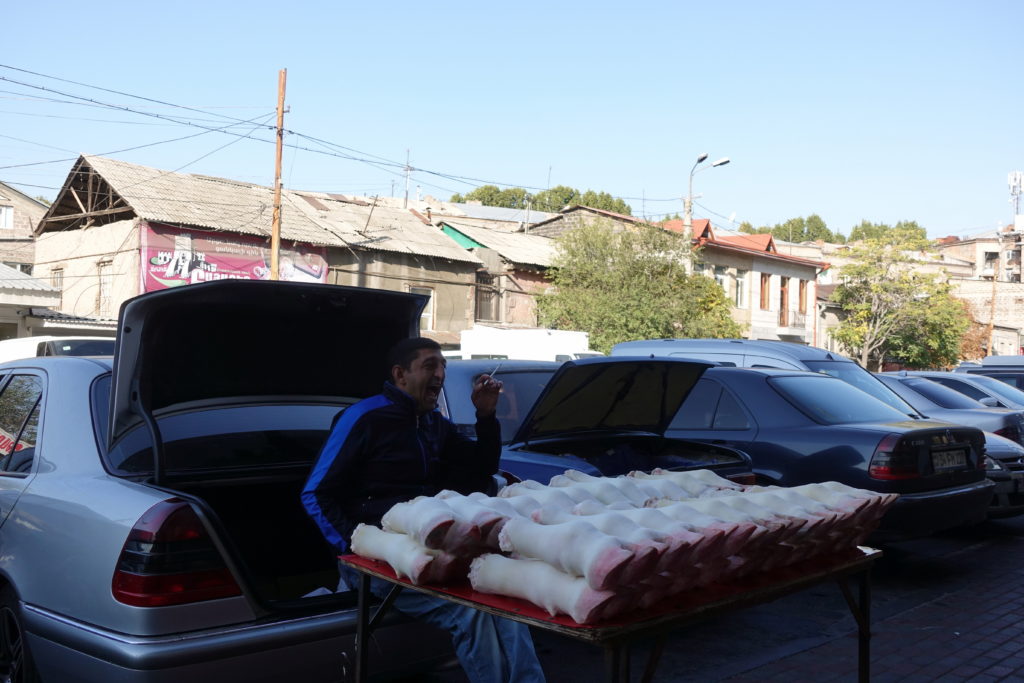
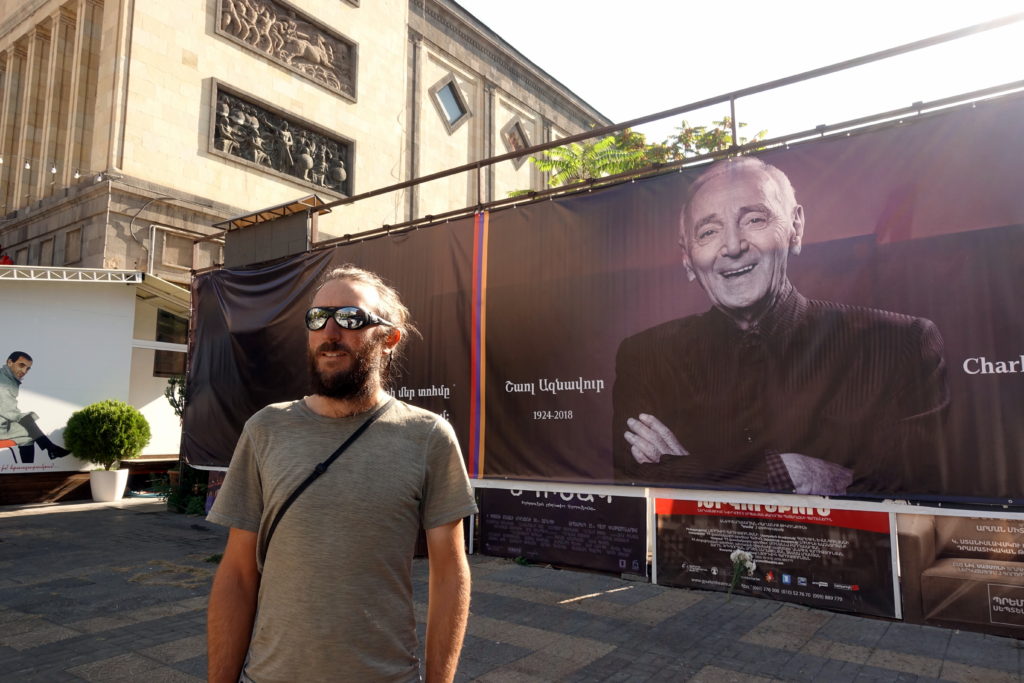
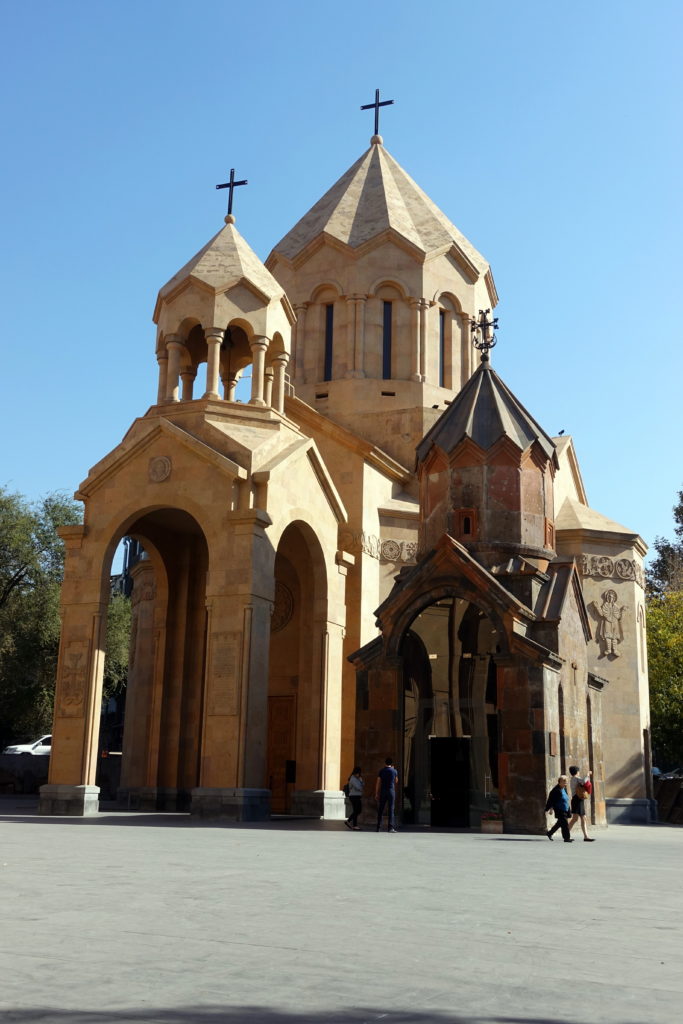
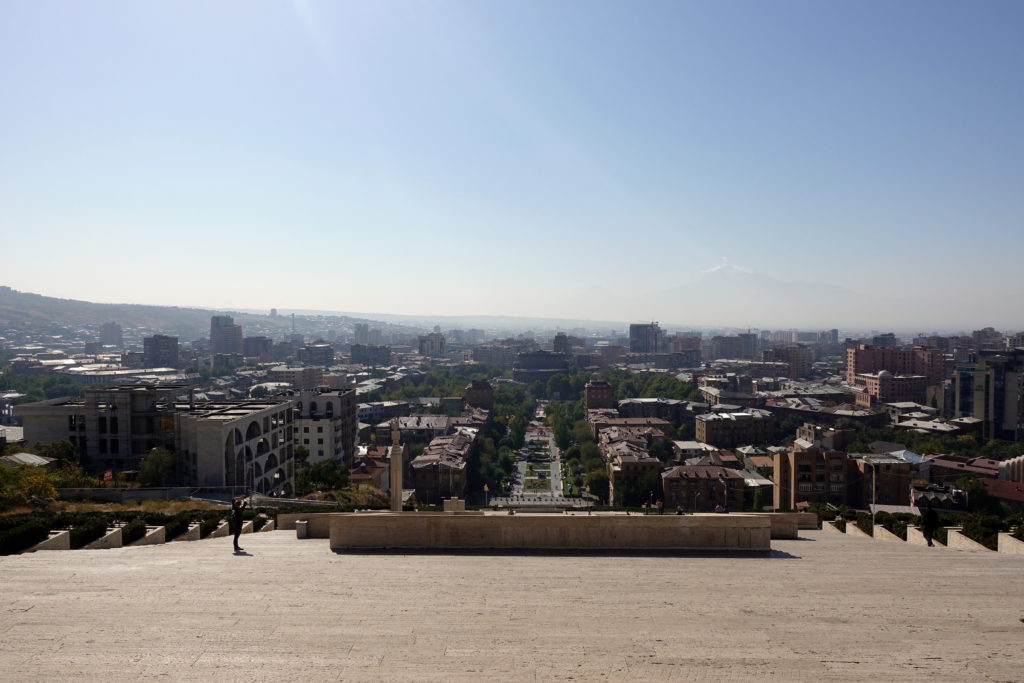
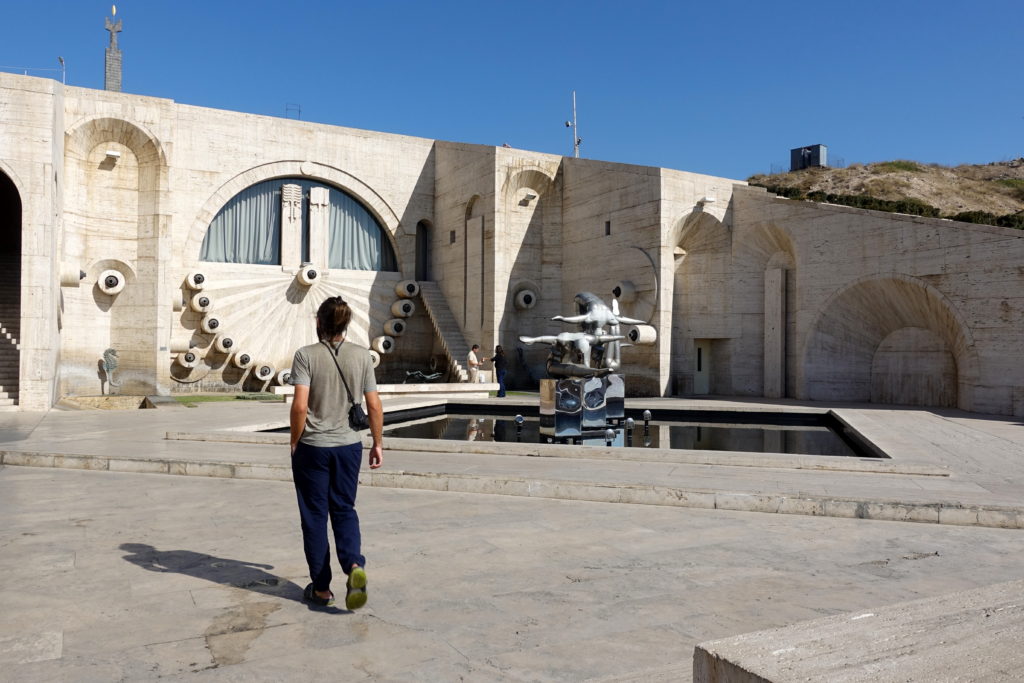
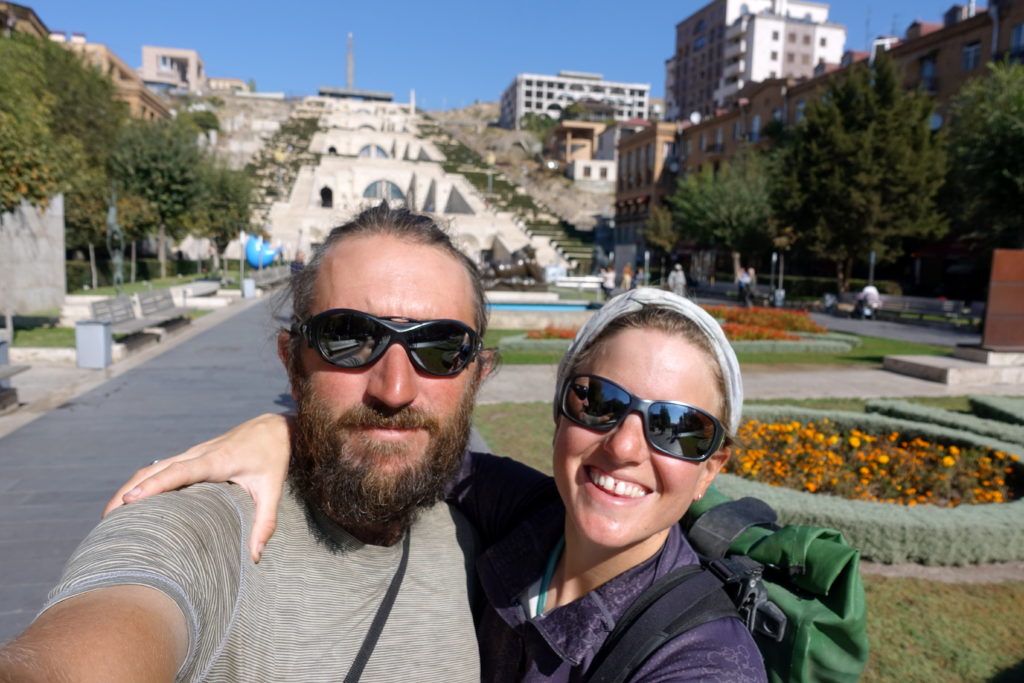
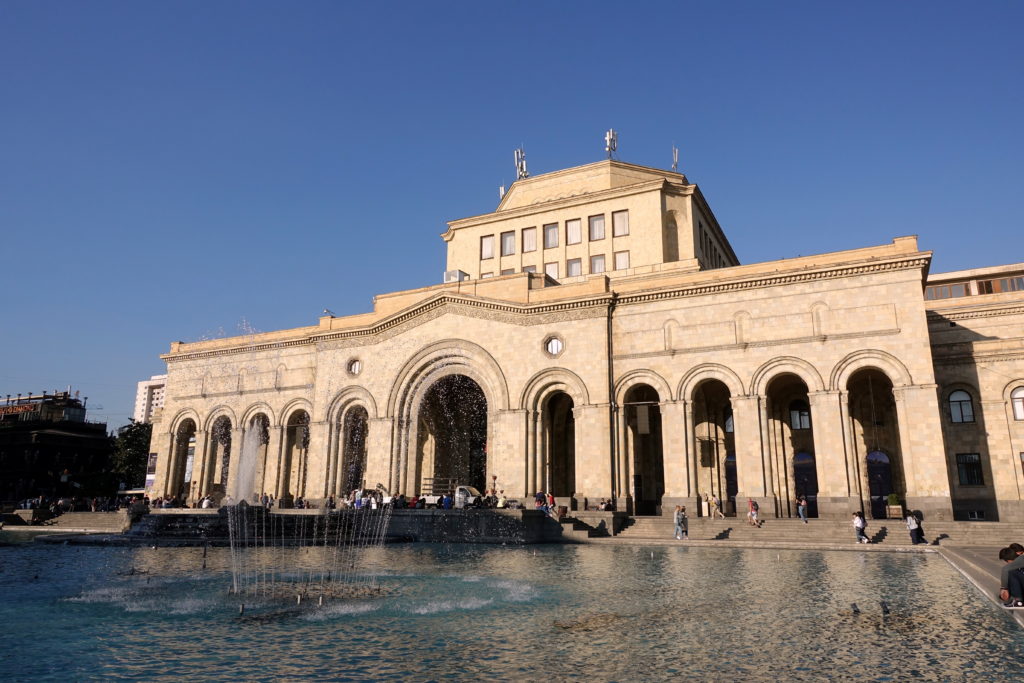
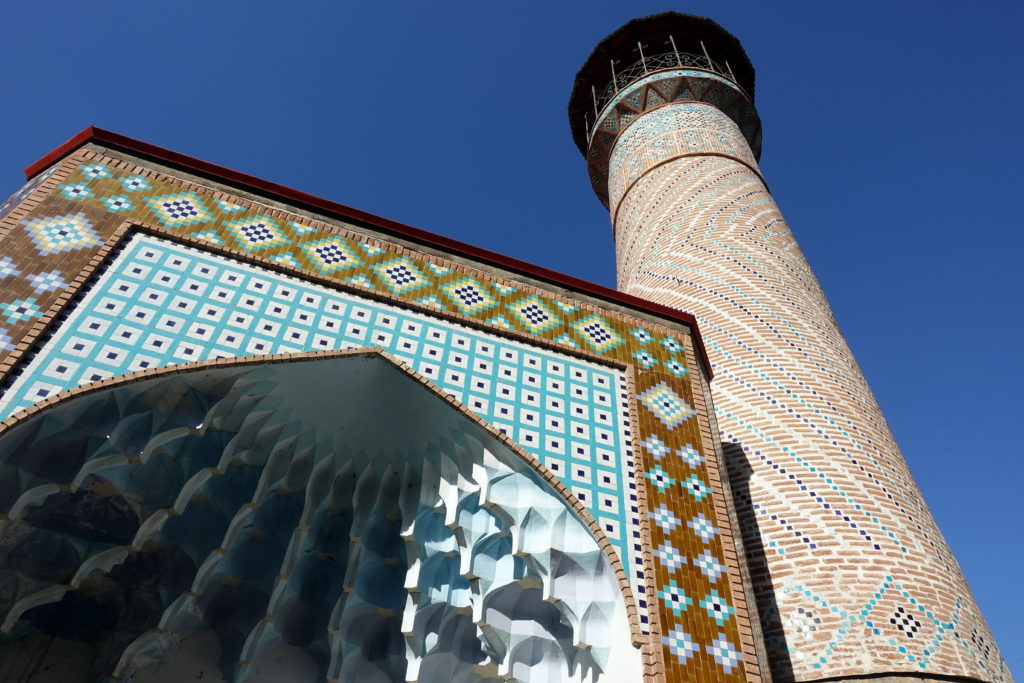
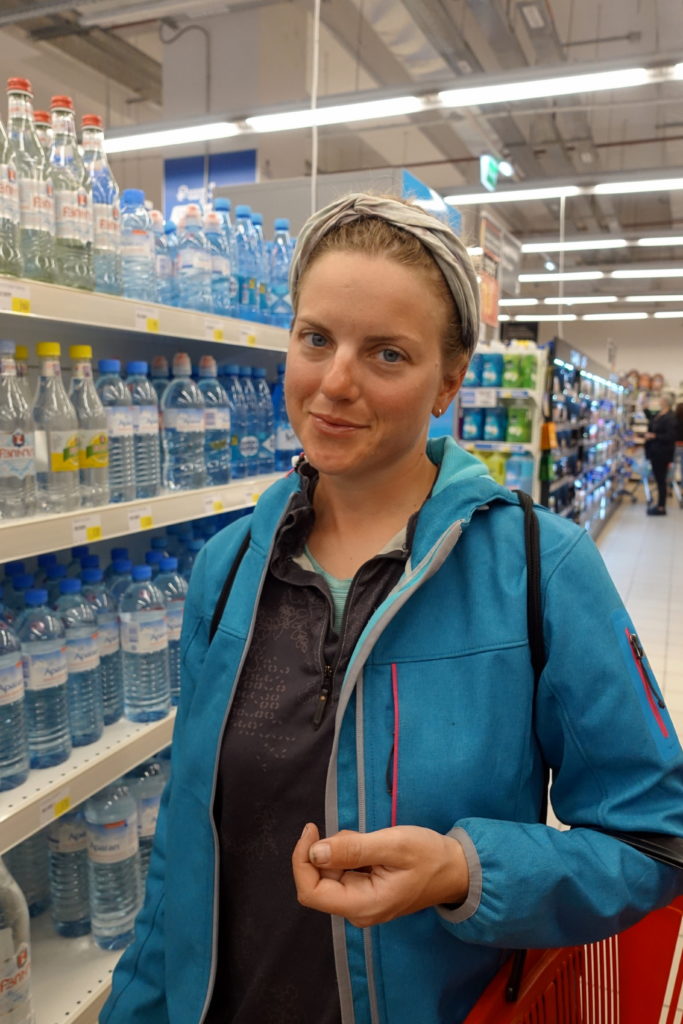
We set out the next day, eager to beat the traffic and cycle westwards towards the Turkish border. Along with Azerbaijan, Armenia also does not have a good relationship with Turkey, so the borders remain closed, and a possibly 200km ride to Erzurum becomes a 500km detour. Our plan was to find some empty, out-of-the-way highways to get back to Georgia and this route seemed reasonable. On the ride outside of Yerevan, we stopped in Vagharshapat to see the Echmiadzin Cathedral, which is the center of the Armenian Church, and the St. Gayane Church. Both places were a little annoying to visit with a bicycle, because the groundskeepers were a little overzealous and adamant that our bike be out of sight in the courtyard and not simply parked off to the side – the Armenian God apparently does not like to see bicycle from the church tower, only four-wheel stinky vehicles. In the afternoon, we continued cycling along the highway and through fruit fields and villages. Along the way, some towns looked run down with huge abandoned Soviet factories looming in the outskirts of the villages. In the evening, we found a camping spot deep in a field and had a great view of the nearby mountains.
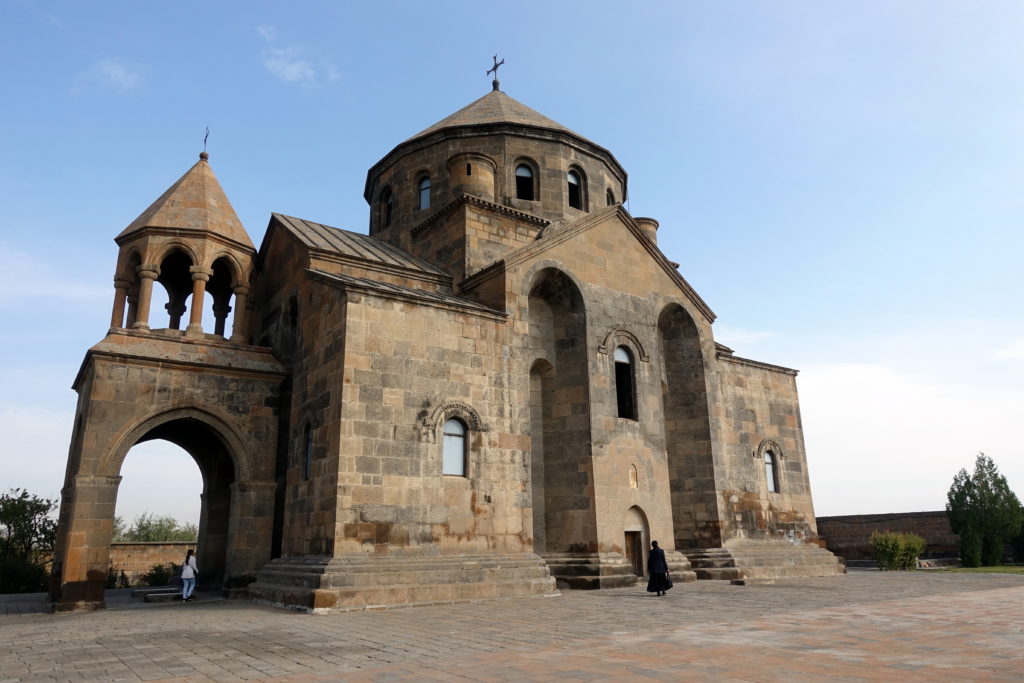
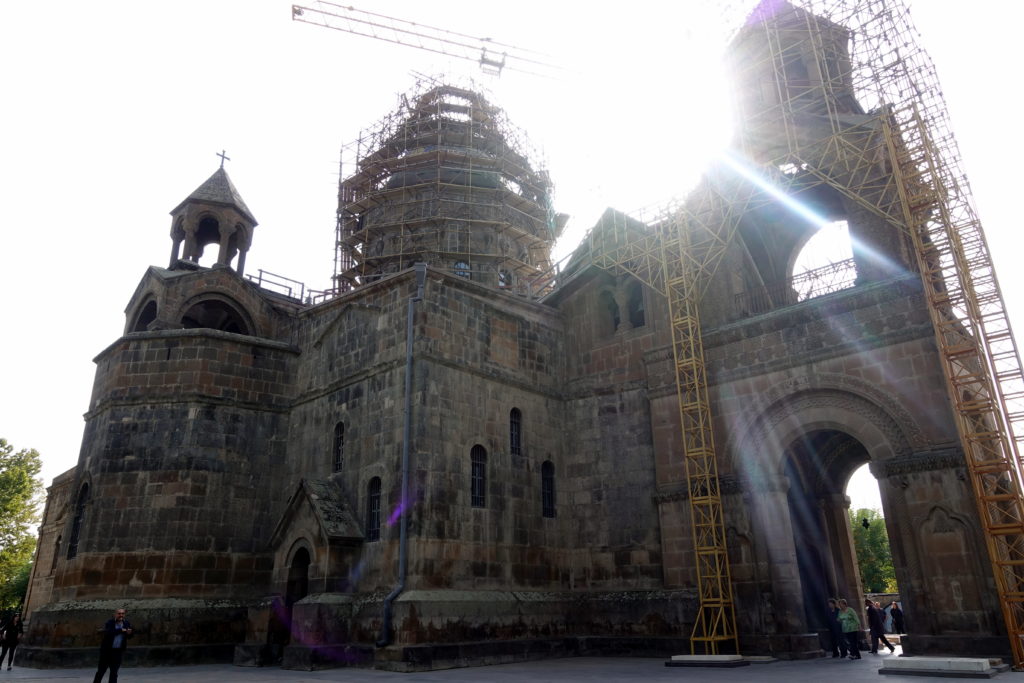
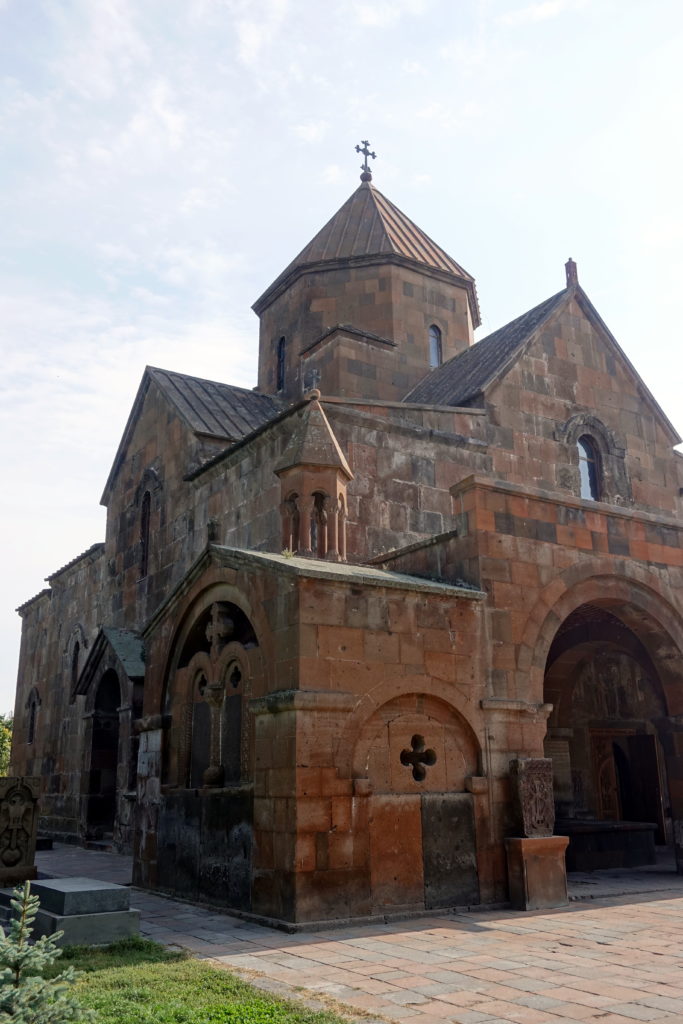
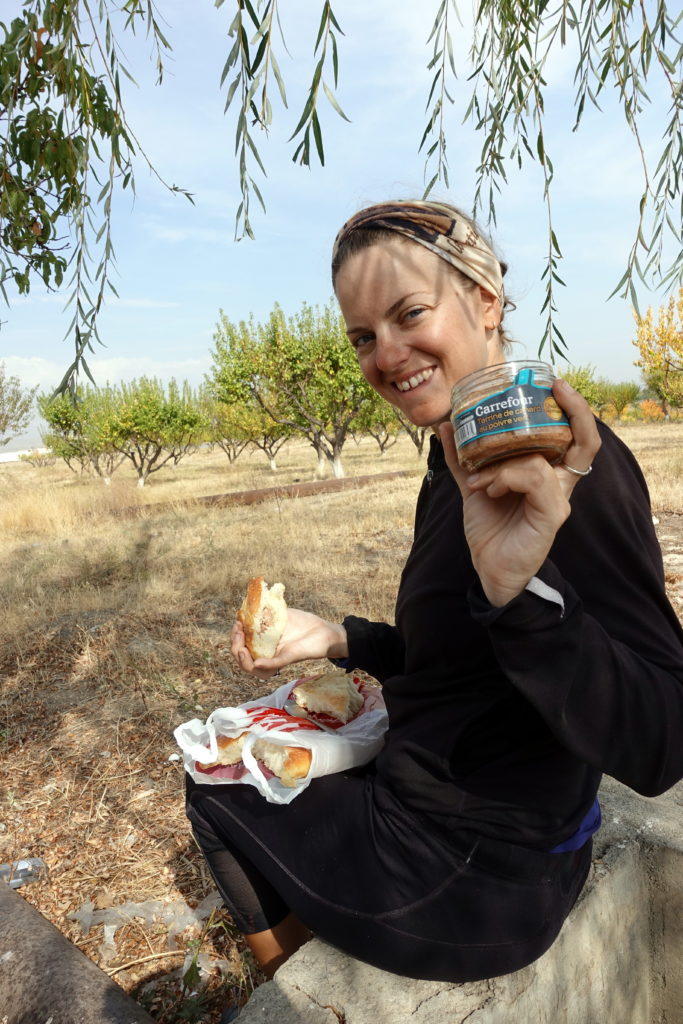
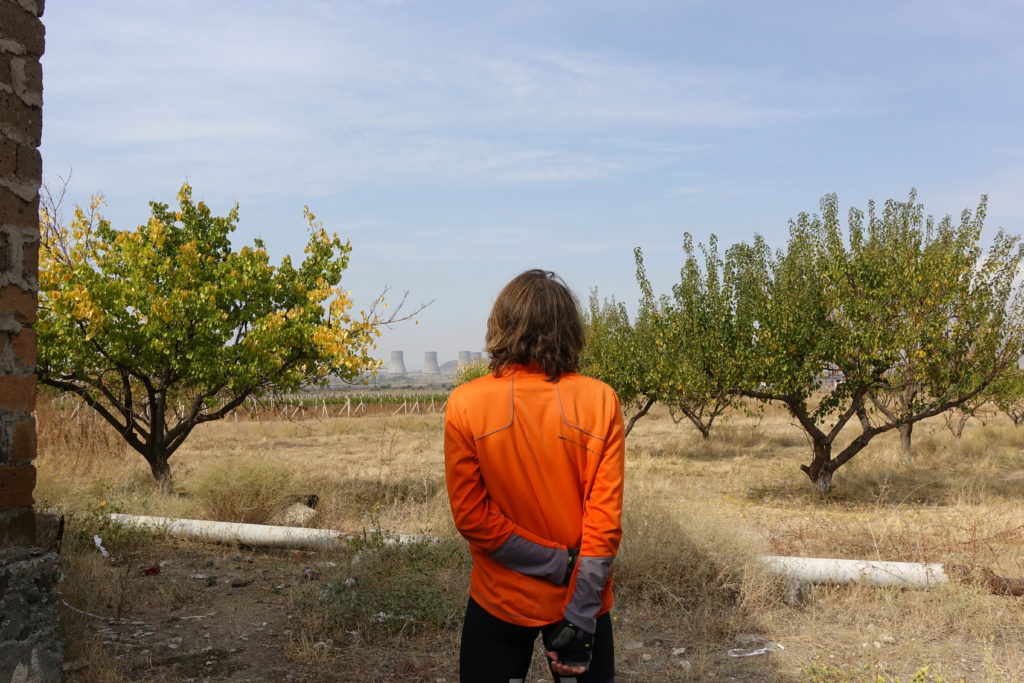

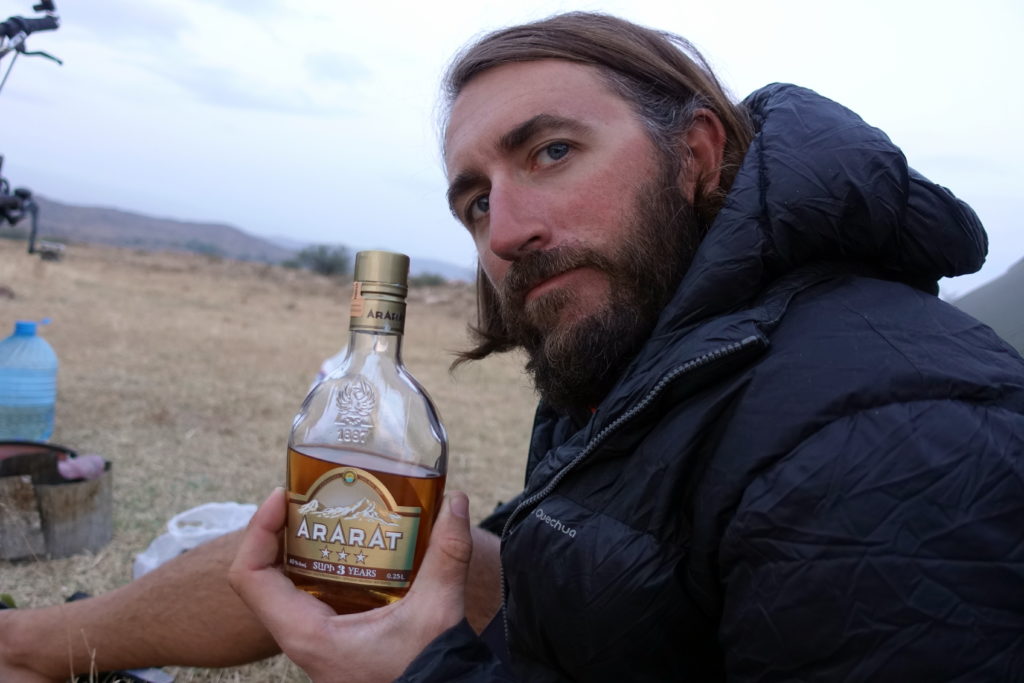
The next morning, we continued along the highway, which was now running north along the Turkish border. For both of us, it was frustrating to know that we essentially needed to cycle back up to Georgia, to cycle back down to Kars in Turkey, which was only about 70 kilometers west of Armenia. The roads exist, but there just needs to be two politicians to set aside old grudges and just open the gate. Unlike in Georgia and the eastern part of Armenia, the landscapes became golden and barren once again, reminding us of eastern Uzbekistan and Azerbaijan. For lunch, we took shelter from the brisk winds in a bus stop, although we were missing the kindness that we experienced in Tajik bus stops a few short months ago. We continued cycling up over the hills, with the weather changing from sunny to cloudy within a few moments. Towards the late afternoon, we finally reached our guesthouse in Gyumri and quickly went out into the city to explore before nightfall. Compared to Yerevan, with its modern rose-colored Soviet buildings, Gyumri’s center was still full of maintained buildings (or at least the facades) dating back to the 18th and 19th centuries when the city was a part of the Russian empire. We also visited a some of the city’s churches before finding dinner and making it back to our guesthouse before the weather started to turn.
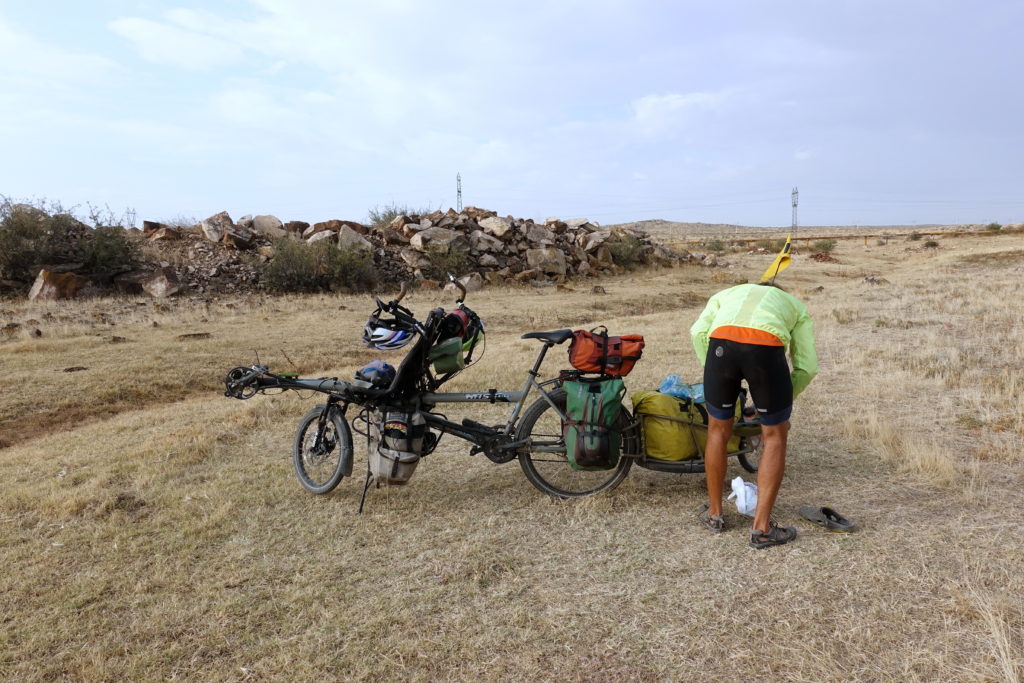
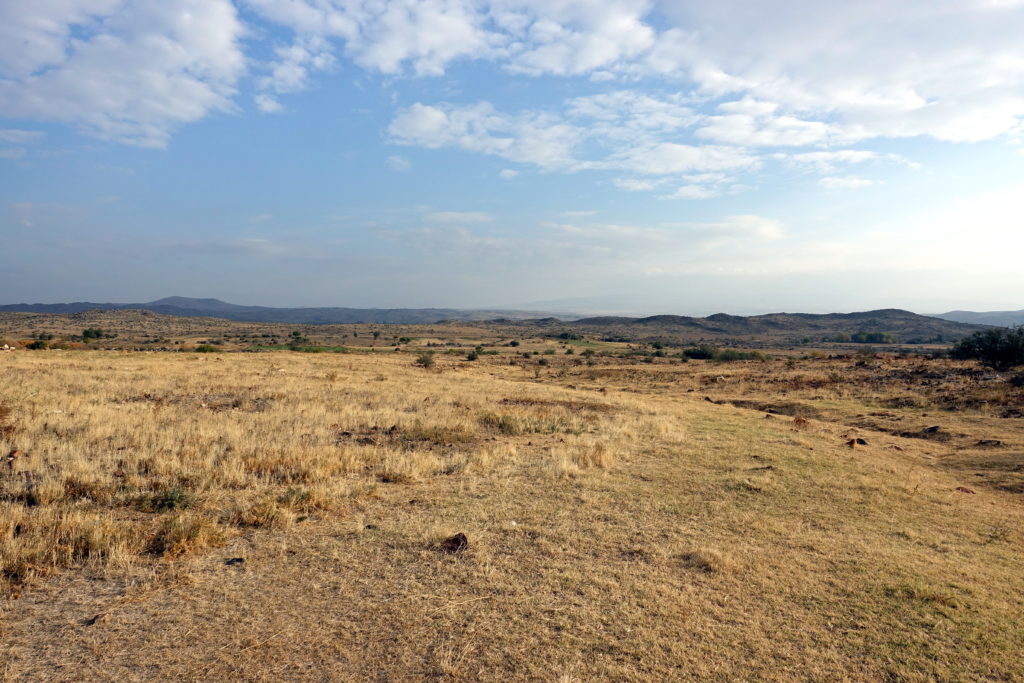
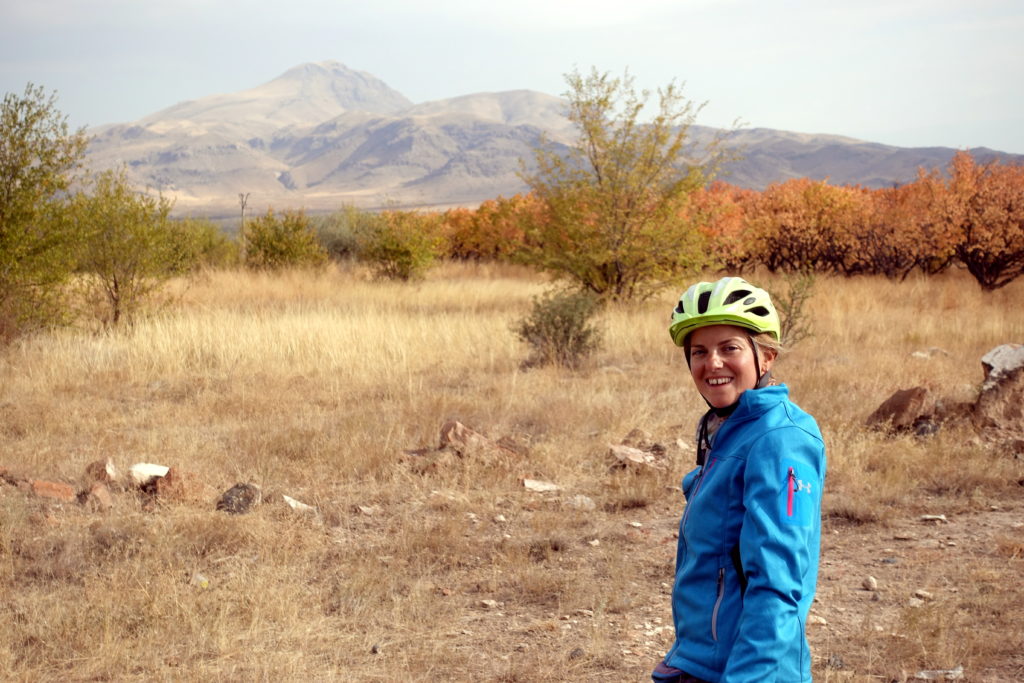
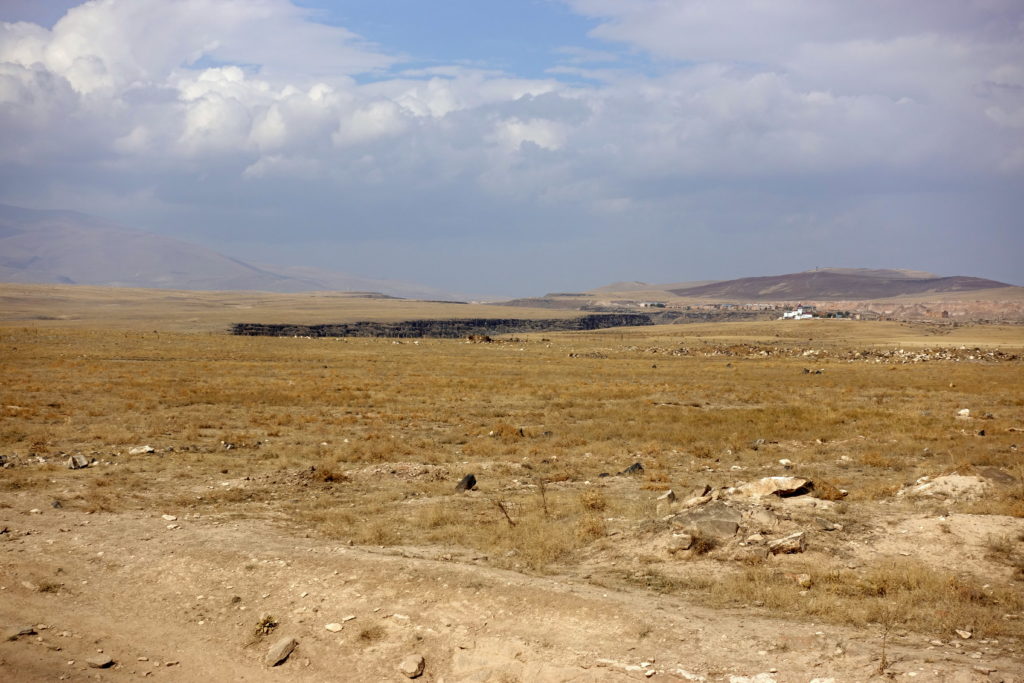
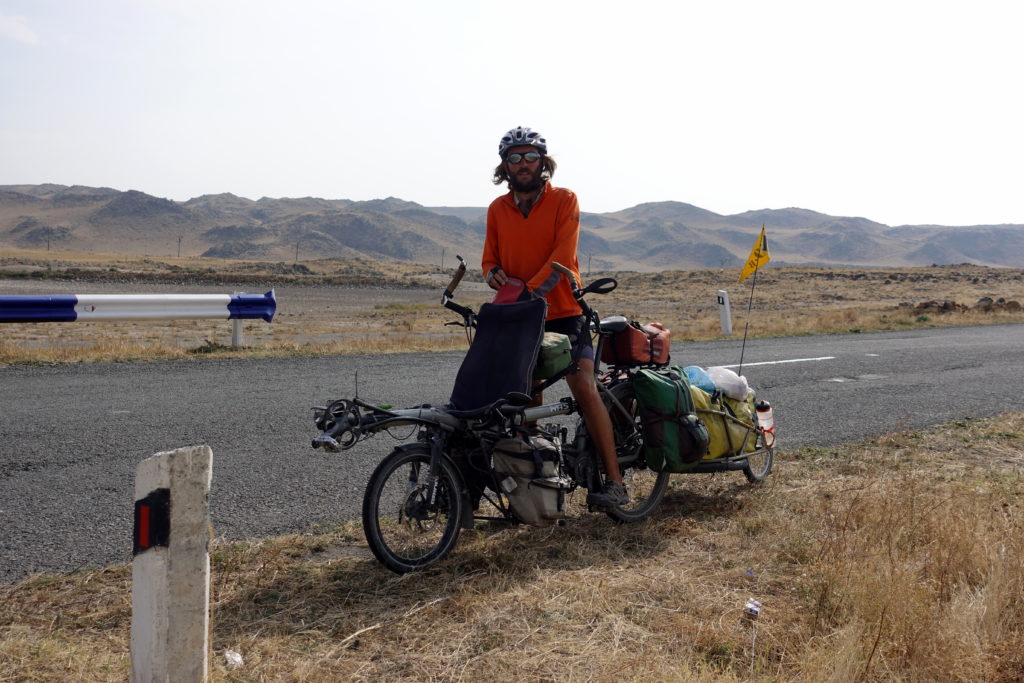
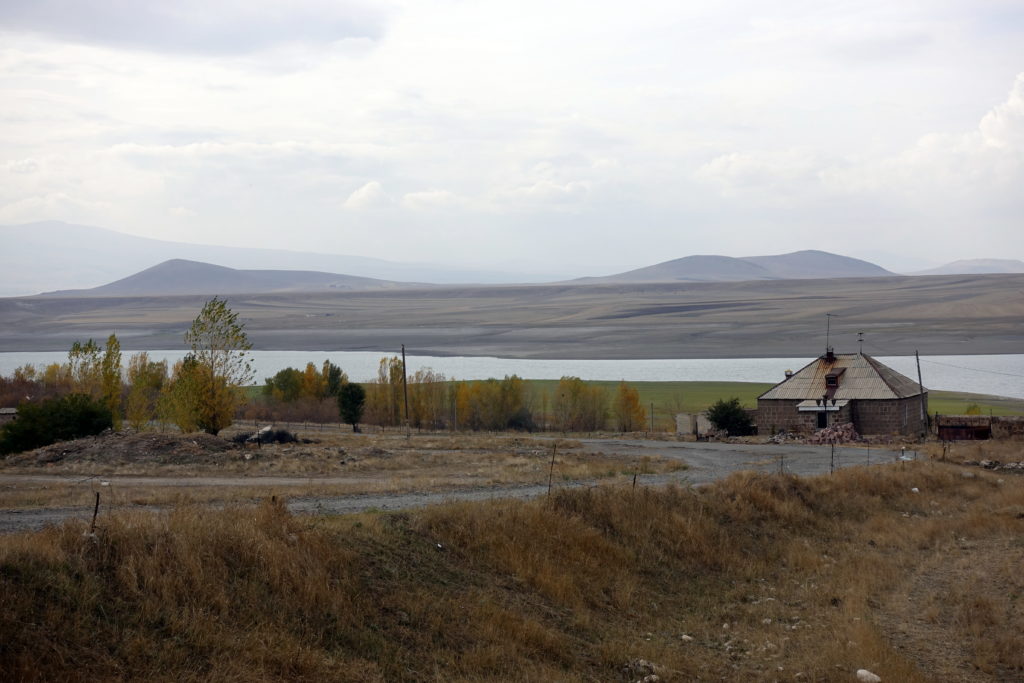
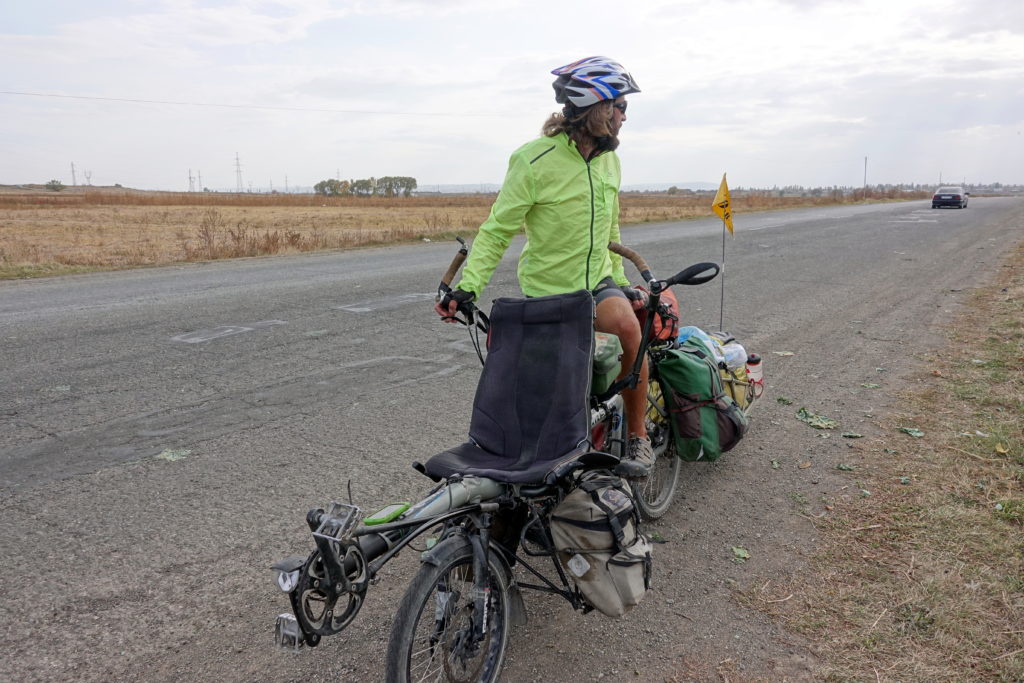
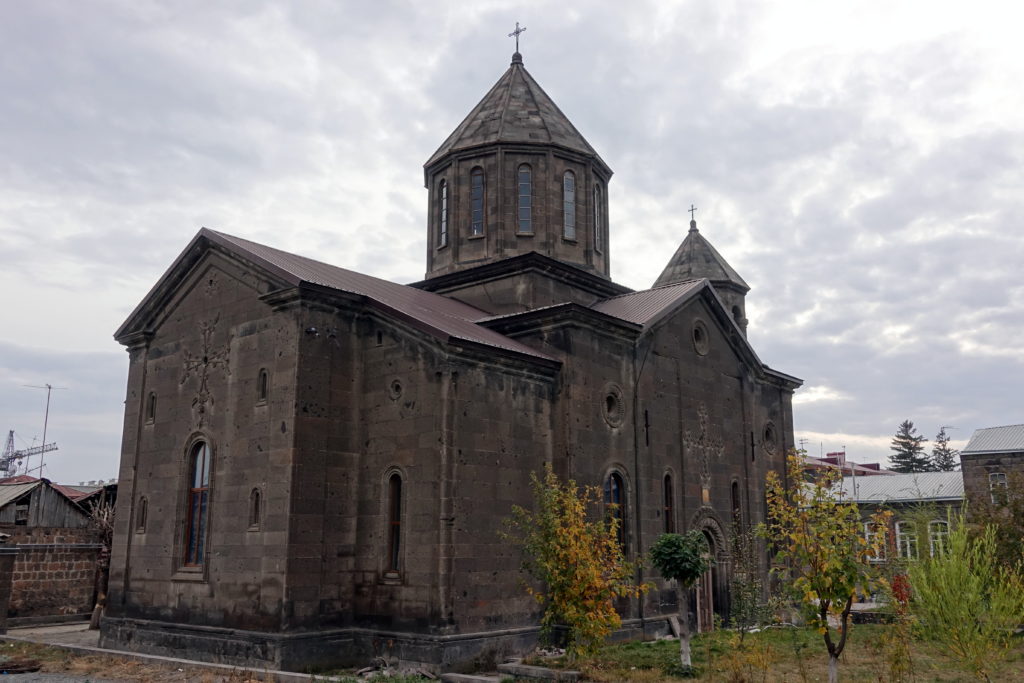
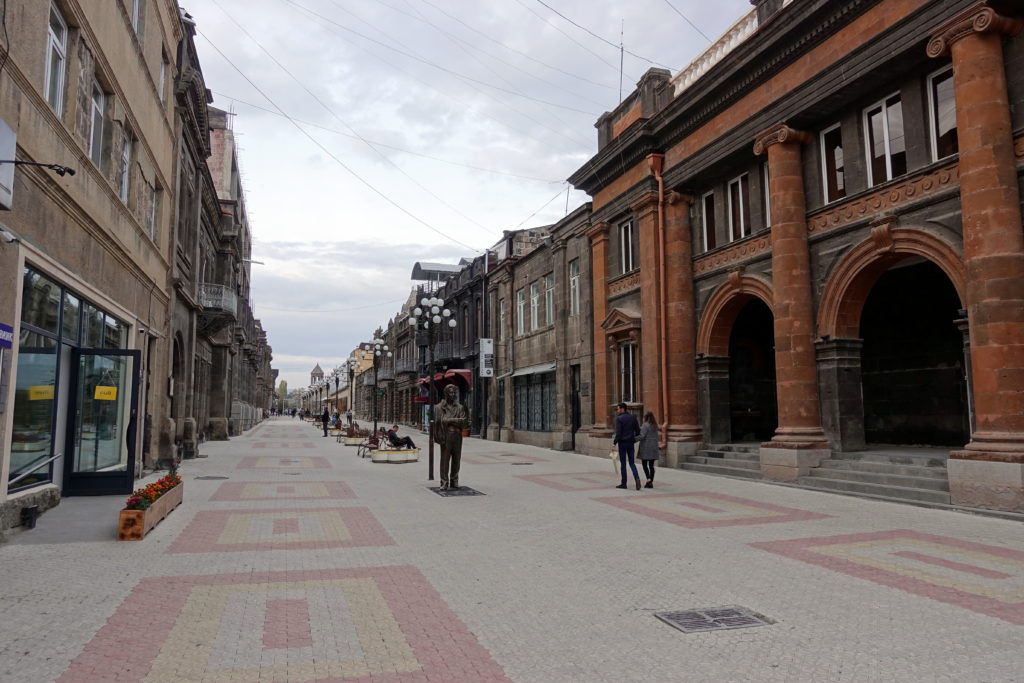
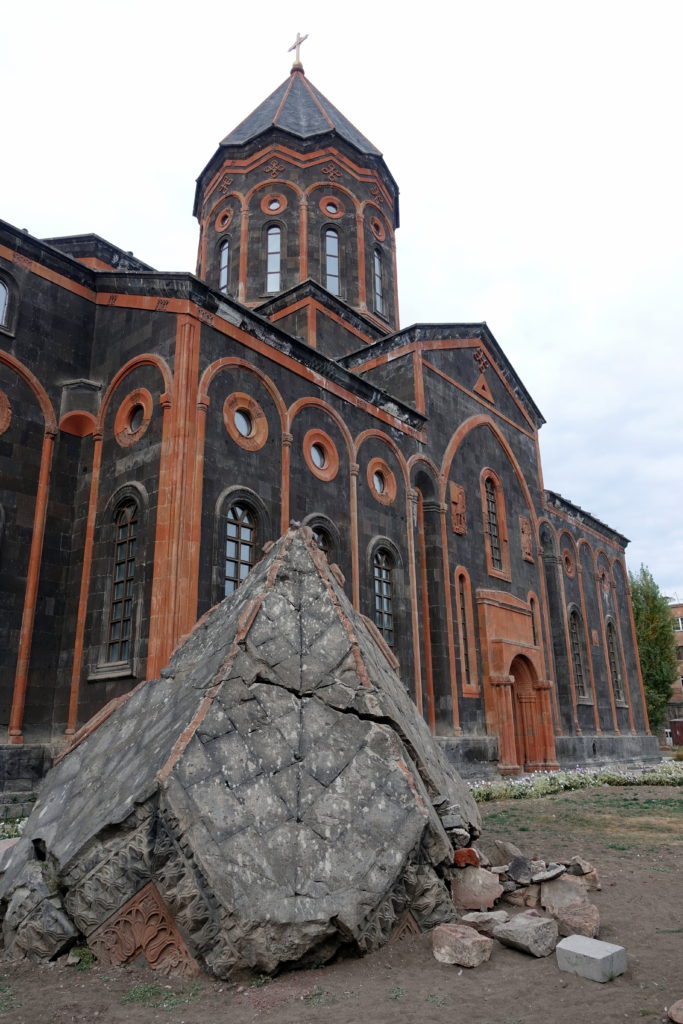
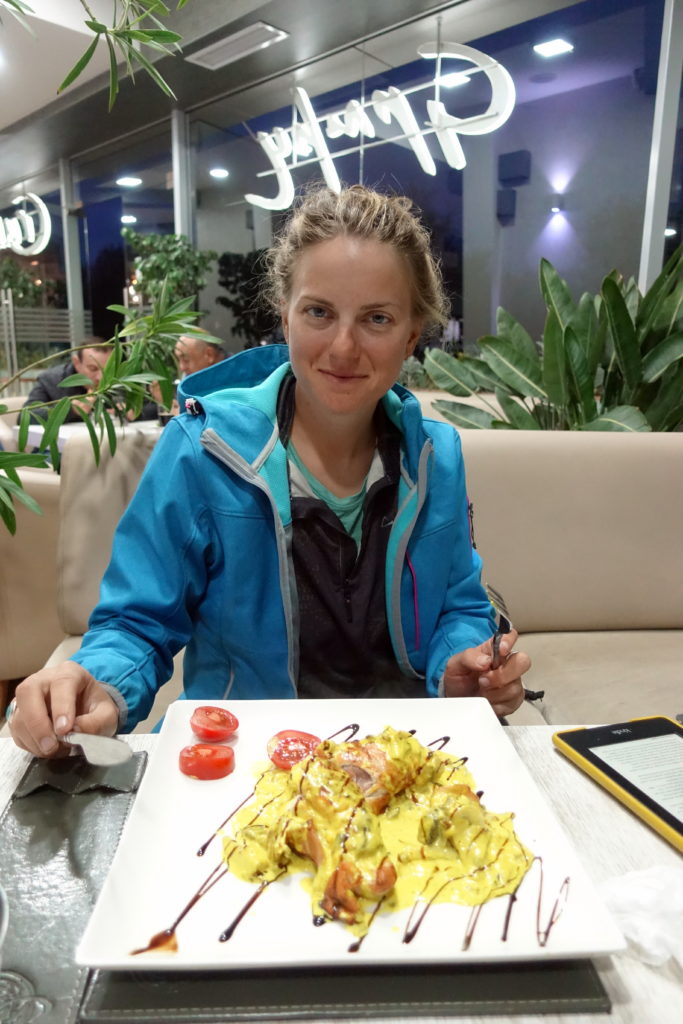
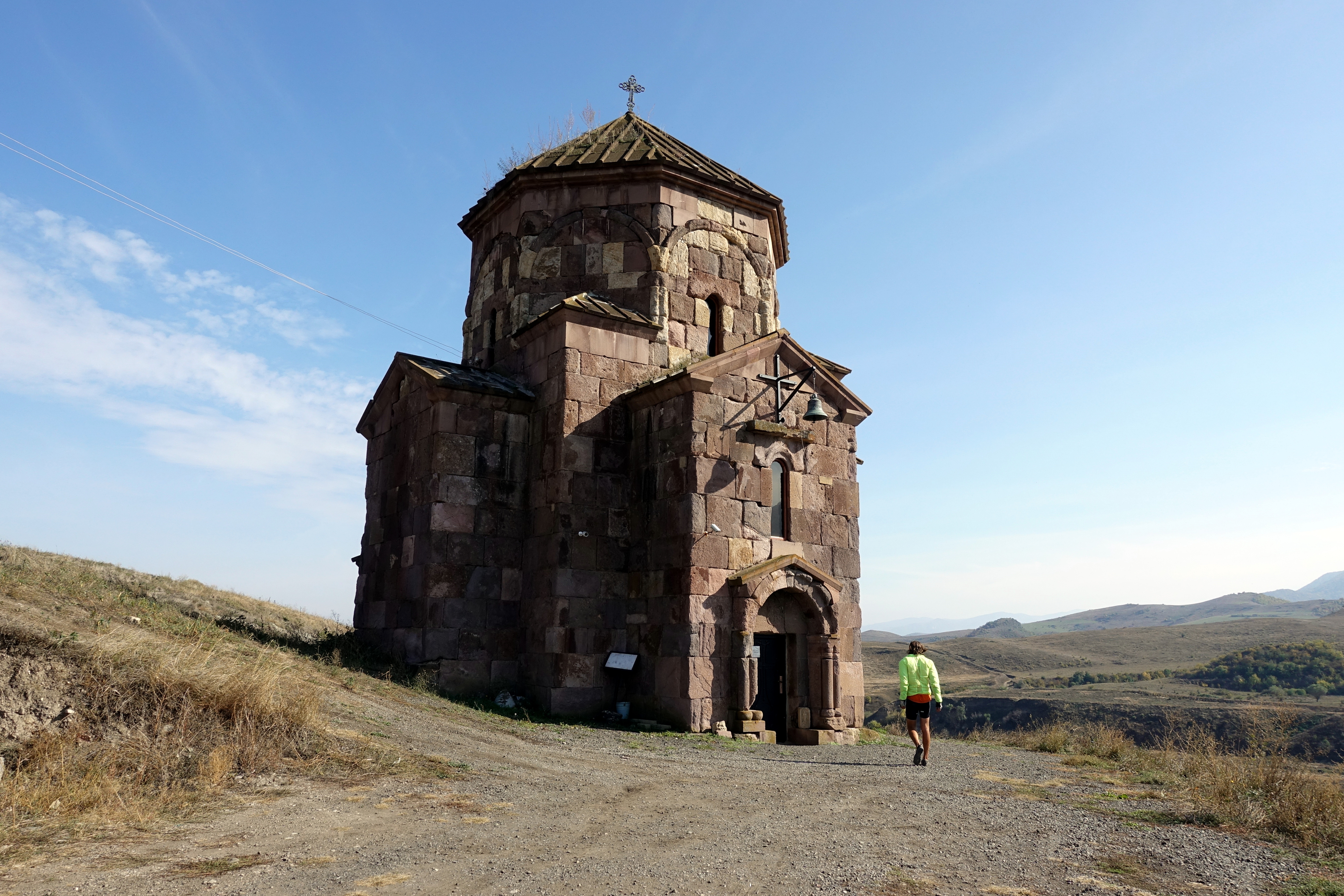
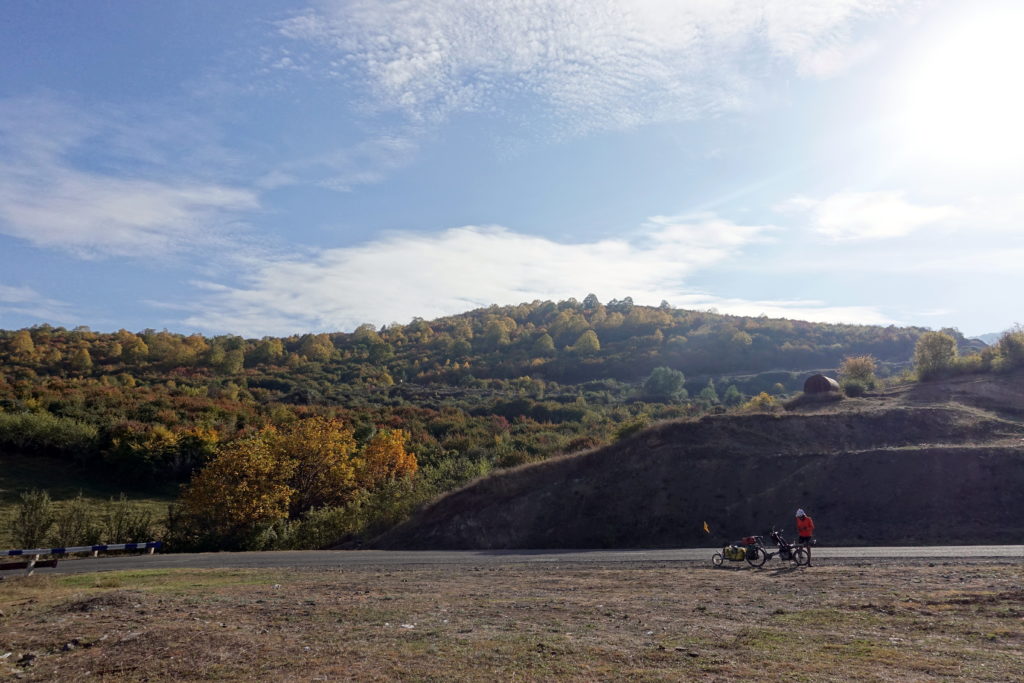
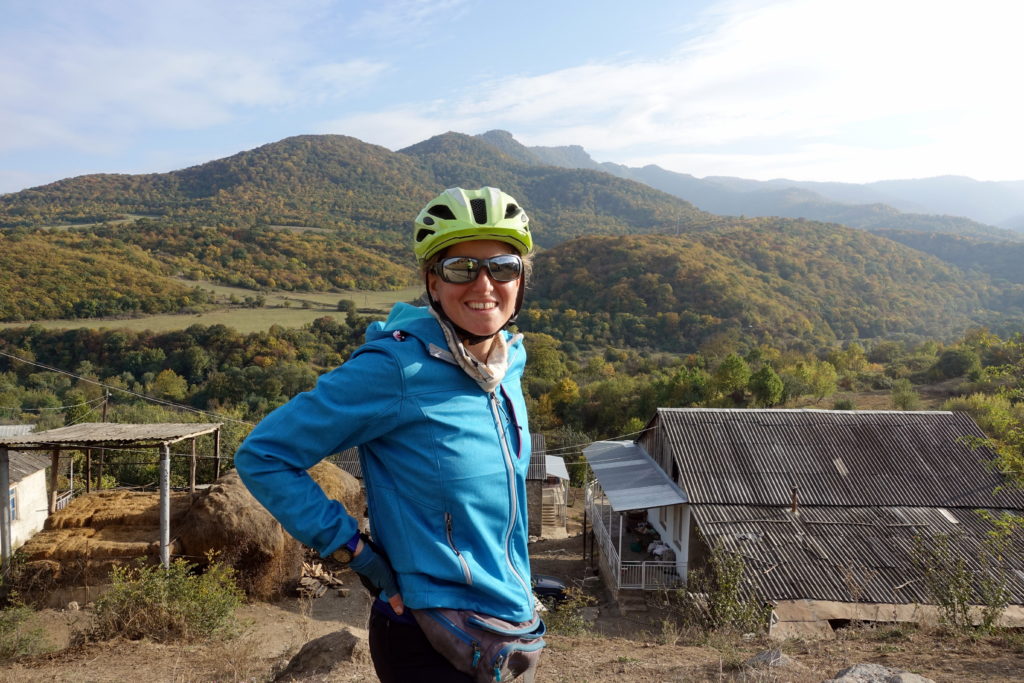
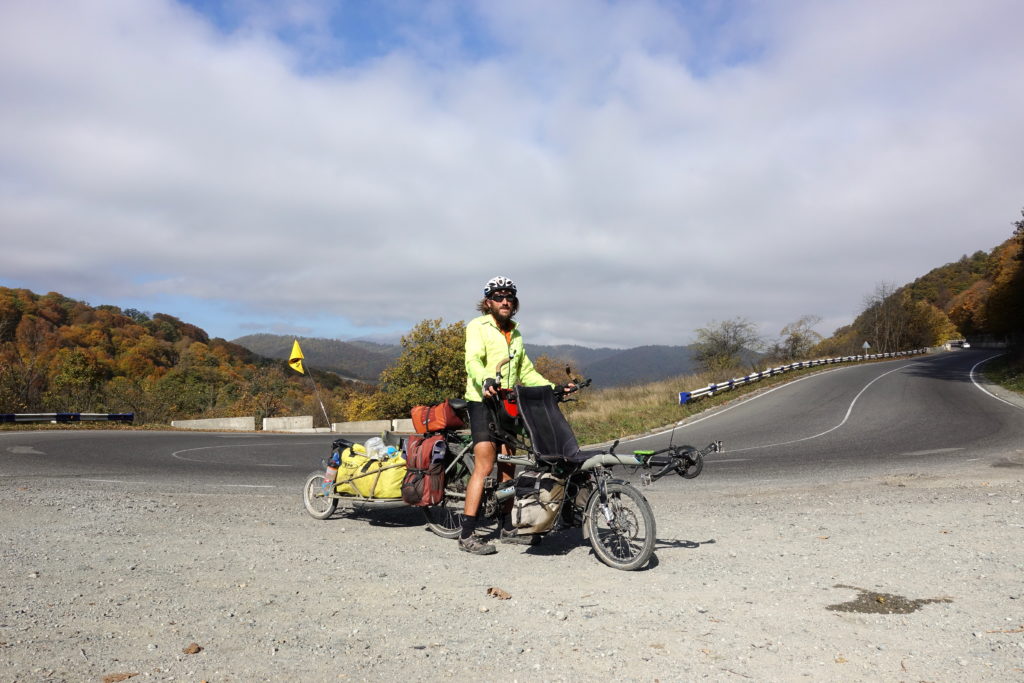
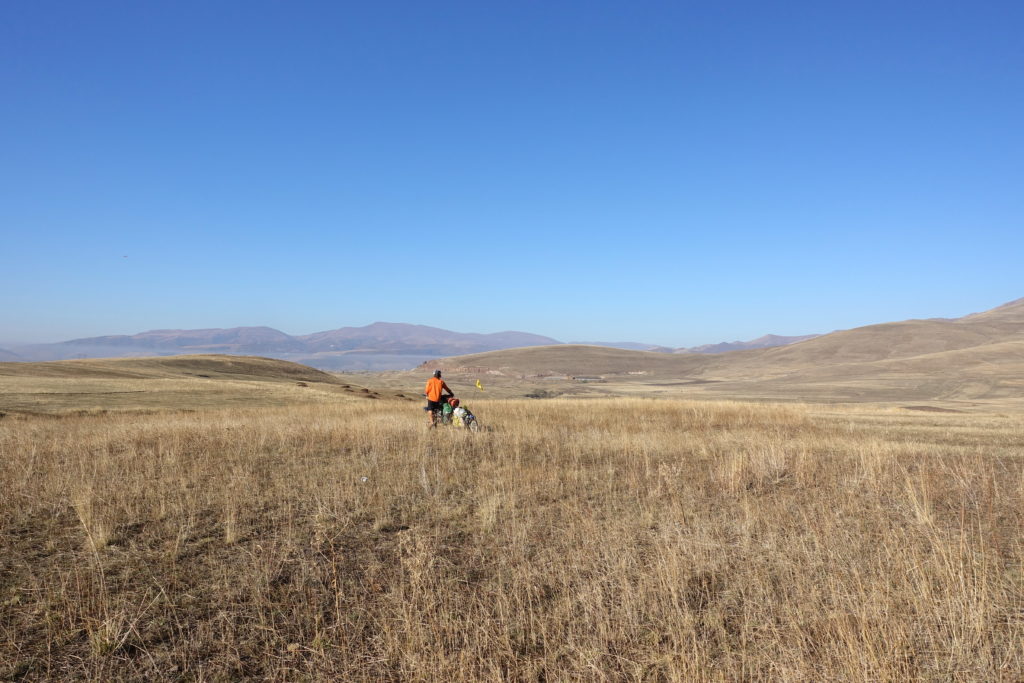
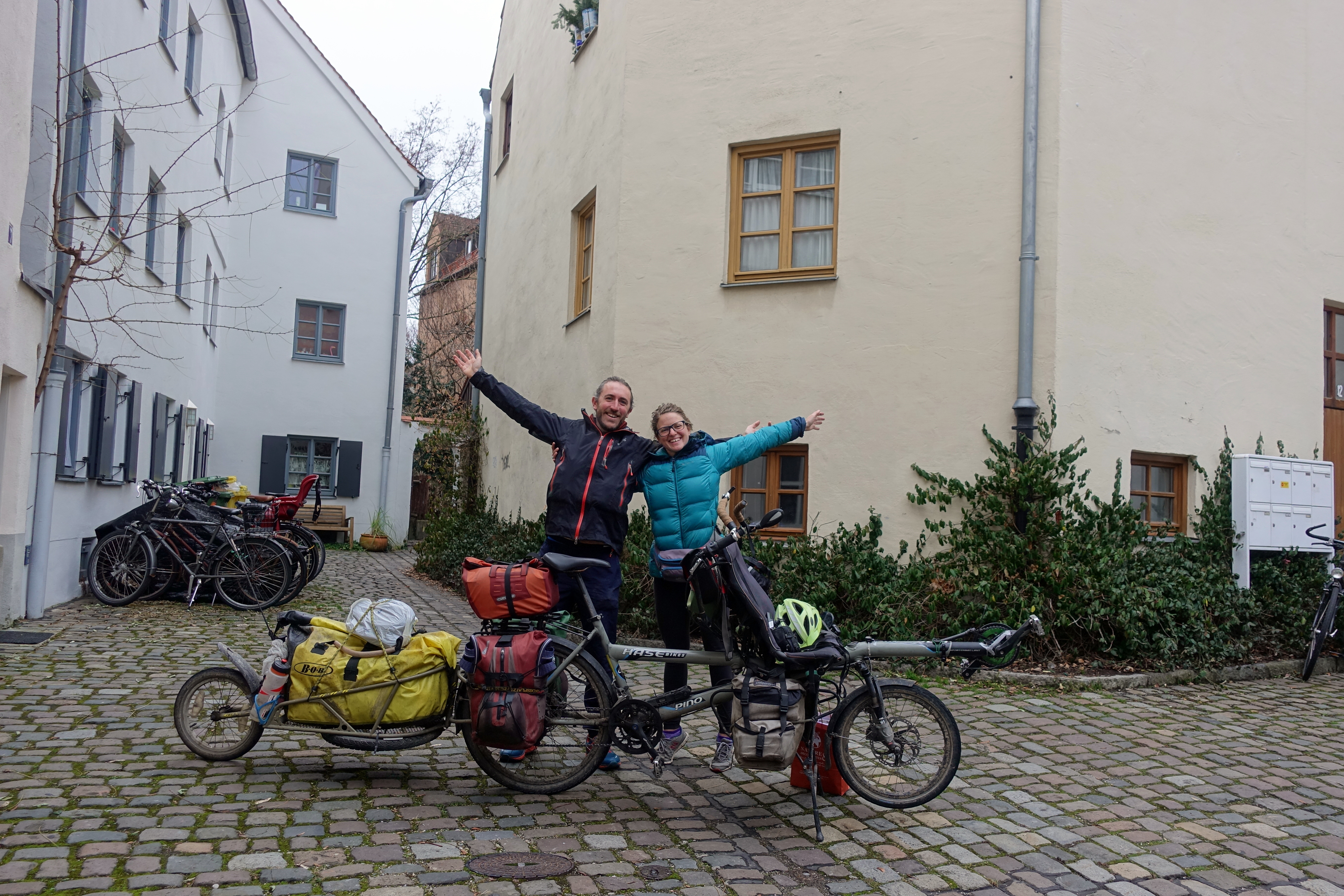
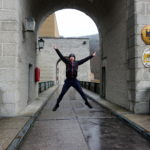

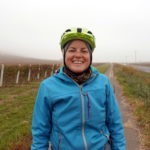
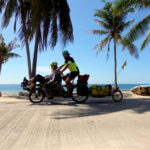

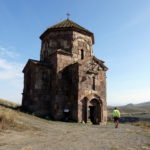
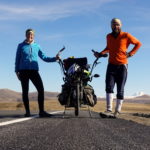
Colby
November 11, 2018 — 04:40
Cycle tire issues from punctures – had me thinking once again about the latest in the tech out there to combat that issue – Tannus airless tires will go 8000 KM with only 1.5mm of wear:
https://tannusamerica.com/pages/tannus-tires
Borepanda is another one:
https://www.boredpanda.com/airless-flat-free-tire-bike-nexo/?utm_source=google&utm_medium=organic&utm_campaign=organic
Love, Colby and Carol
Cassie & Cédric
November 11, 2018 — 07:53
🙂
Honestly flat tires aren’t a big issue! It’s easy to repair, doesn’t take much time or tools, and we’ve had only 5 punctures this year (all in the last 4 months). About Tannus…well, they aren’t the only ones claiming that you won’t have punctures any more. Punctures are however not the only criteria : grip, surface, rolling friction, weight, foldability, etc. At the end, most of cyclists use some Schwalbe touring tires (we use the Mondial and Tour Plus).
About the borepanda, that looks like the silliest tires, just good for a few kilometers going to the local store… Imagine going into a muddy track, across a river or through sand with that?!?
Josette Koets
November 11, 2018 — 05:14
I love seeing flora and fauna that I could find here in Minnesota. The hummingbird moth is one and on one of my favorite flowers, Verbena Bonasarius. I also enjoyed reading your synopsis of the Stan’s! Closing in on the slopes of Austria; wish I could join in the celebrating! Oh yeah, we got your postcard a couple of days ago, thanks, that was special!! Aunt Jo
Philippe Papasian
November 11, 2018 — 15:00
Bonjour Cédric,
Je suis heureux de voir que vous avez jugé utile de faire un long détour pour visiter ma mère patrie, l’Arménie!
Savais-tu avant d’arriver à Yerevan que Charles Aznavour était décédé?
Je compte sur toi pour m’en dire plus à ton retour en Allemagne: on aura peut être l’occasion de retravailler ensemble?
Cassie & Cédric
November 11, 2018 — 17:34
Salut Philippe,
Oui on a appris ça quelques jours avant d’arriver en Arménie. C’est surprenant qu’il soit une telle célébrité là-bas, il y a des photos même dans les plus petits villages (où personne ne parle français d’ailleurs!). On a fait une soirée top-Hits de Aznavour sur youtube, il était inconnu de Cassie (et probablement de la majorité des américains).
Je me disais bien également que le nom de famille sonnait Arménien ! Y vas-tu parfois ? C’est de loin le pays le plus agréable que nous avons visité dans le Caucase, malgré les tensions avec les pays limitrophes ainsi que les inégalités de richesse parfois suspicieuses… Jamais vu autant de Bentley et Rolls-Royce de ma vie qu’en Arménie !
Ça fonctionne toujours le projet de l’année dernière ? Rien de prévu en 2019 pour l’instant mais prêt pour retravailler ensemble 🙂
Marie-Claude and Philippe
November 11, 2018 — 15:05
Those slaugther houses would be the nightmare of L214 association. Amazing to see some Terrine de canard in Armenia but hopefully you will only find the true one in south west of France likewise foie gras other source of concern for L214. By the way, you did not tell us you were sponsored by Coca Cola… 🙂
Cassie & Cédric
November 11, 2018 — 18:57
Mouais, pas grand-chose à voir…la c’est plutôt une question d’hygiène, c’est très loin des délires de la viande industrielle.
D’ailleurs les vaches arméniennes ont probablement une vie meilleure que certaines en Europe de l’ouest.
Le foie gras, c’est pas originaire d’Égypte et Rome ? 🙂
fred spengler
March 5, 2019 — 15:04
Hi C&C
We’re landing in Yerevan in mid May.
Any good places you saw that were good to stay?
Warmshowers seem pretty sparse
Thanks
Fred & Wendy
Cassie & Cédric
March 5, 2019 — 15:25
Hello Fred & Wendy,
We stayed at the Hostel Vagary. They own a building nearby that was under construction a few months ago and that a lot of cyclists were using to store safely their bikes and gears. If you get a double room you can use a nice separate kitchen and be in a quiet area – the rest of the hostel is pretty busy with lots of backpackers in the dorms. We figured that Warmshowers was basically a waste of time in the Caucasus and Central Asia – apart from some rare few hosting hundreds of people, the others are dead accounts : wild-camping, local guesthouses or B&Bs are cheap are often great though!
Cheers and safe ride!
C&C